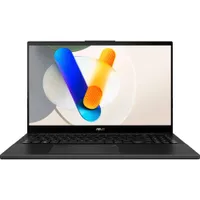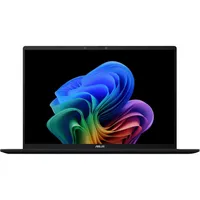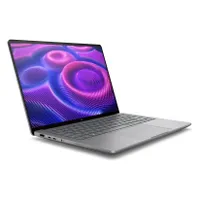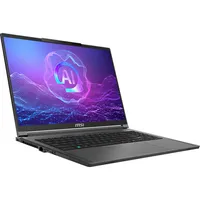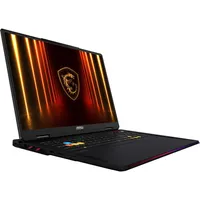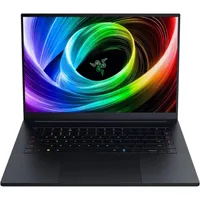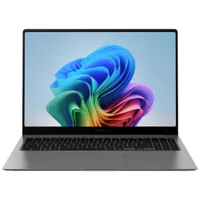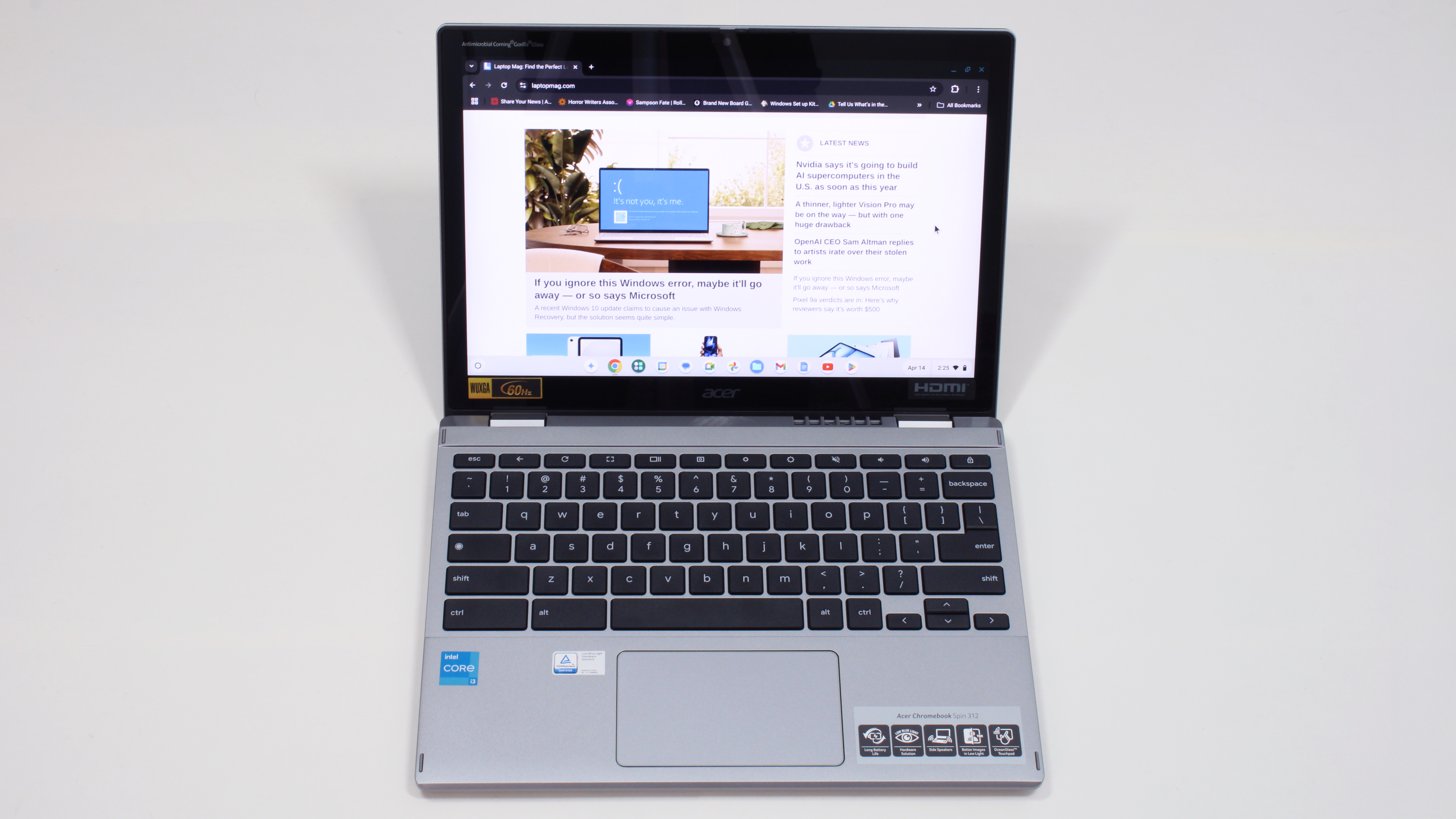Speed, clarity, and color — these are the 5 best laptops for graphic design in 2025
The best laptops that help graphic designers do their best work, based on our testing and reviews.
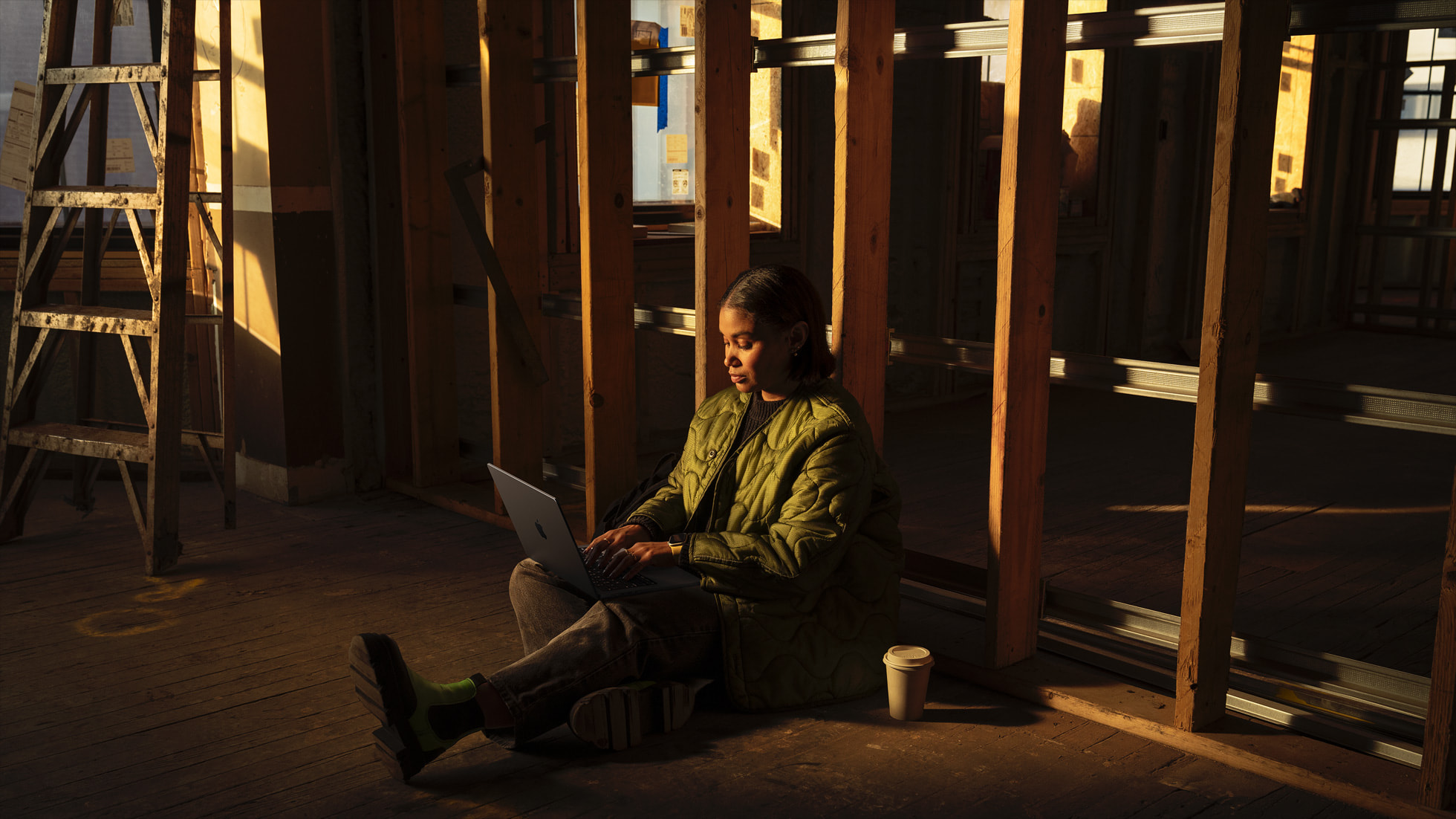
1. The list in brief
2. Best overall
3. Best budget
4. Best Windows
5. Best 2-in-1
6. Best gaming
7. Benchmark comparisons
8. Recently reviewed
9. How to find the right graphic design laptop
10. FAQs
11. How we test graphic design laptops
12. Why trust Laptop Mag
A lot of what makes the best laptops for graphic design is similar to the best laptops for Photoshop, but the two most important are blazing performance and and a display that can produce a seemingly endless expanse of colors. These features are crucial when you are, say, designing marketing materials for Academy Award-nominated films like my fiancé used to do — sometimes as the awards aired on live TV.
If one of them won, he'd have to open the correct Photoshop file, edit and arrange the text, convert the file, and send it to the marketing firm so they could post it to social media before the award winner finished their 45-second speech. A slow processor would have been disastrous to that entire process.
But so would have a dull, lifeless display. The colors of those marketing materials often matched the overall color pallet used in the films themselves, so his job also relied on having a display with great color coverage and overall brightness.
Depending on where you spend the most time designing, a laptop with a shorter than average battery life might not be a dealbreaker; some of the best workstations and the best laptops for video editing also make fabulous graphic design machines. But unless you're desk-bound, ideally look for something that lasts at least 11 hours.
This page is regularly updated with our latest reviews to reflect Laptop Mag’s top picks for 2025.
Click to view recent updates to this page.
Update Log
6/10/25: Added Apple MacBook Air 15 M4 as best budget option, Asus ProArt PX13 as best 2-in-1; updated the following sections: recently reviewed, FAQs, intro, and how to choose a graphic design laptop.
The Quick List
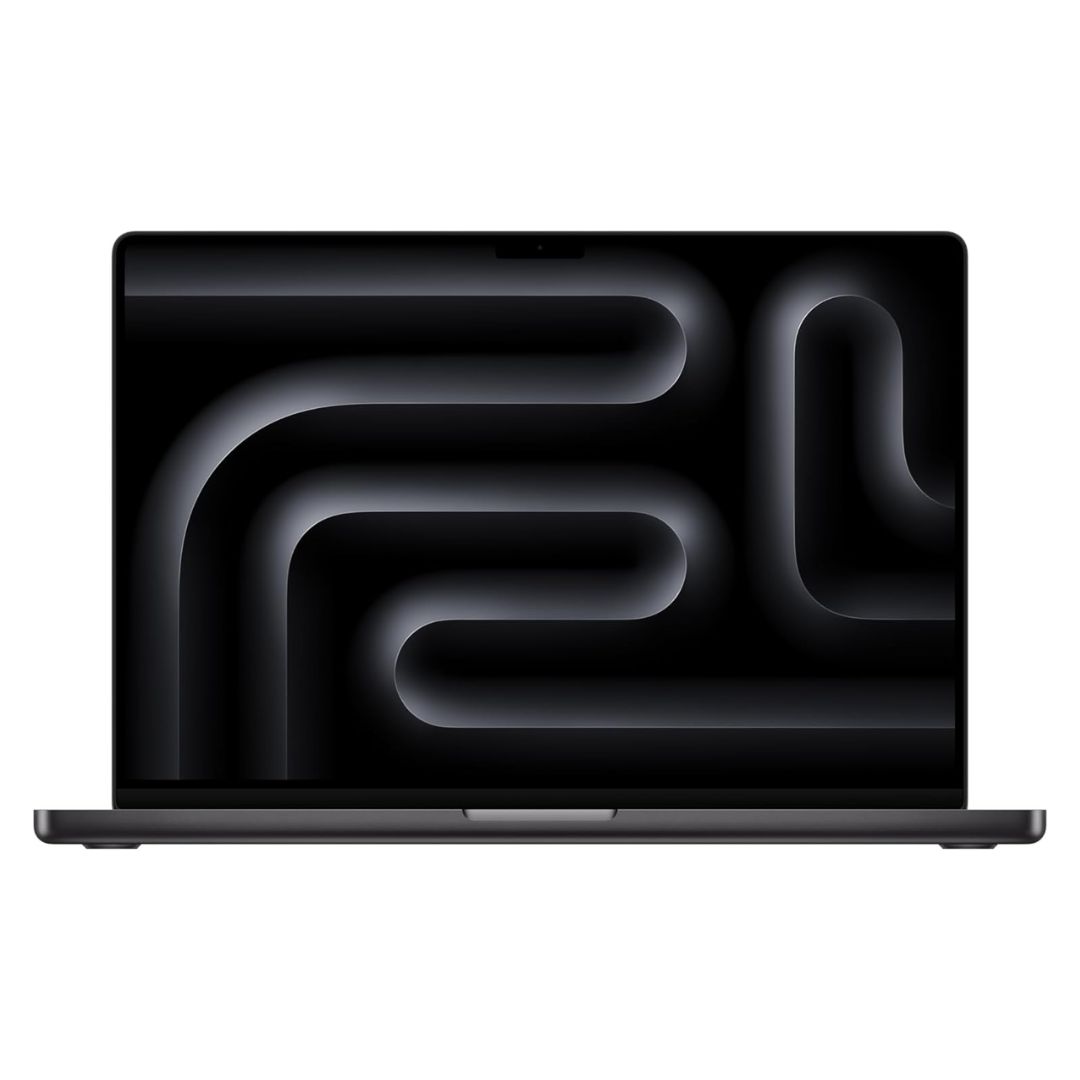
The best overall
MacBook Pros are the gold standard for graphic designers. With the best balance of stunning graphics, incredible performance, and seemingly endless battery life, the latest MacBook Pro 16 has raised that standard even higher.

Best budget
Nearly all the best features of the Pro in a smaller, more affordable package.
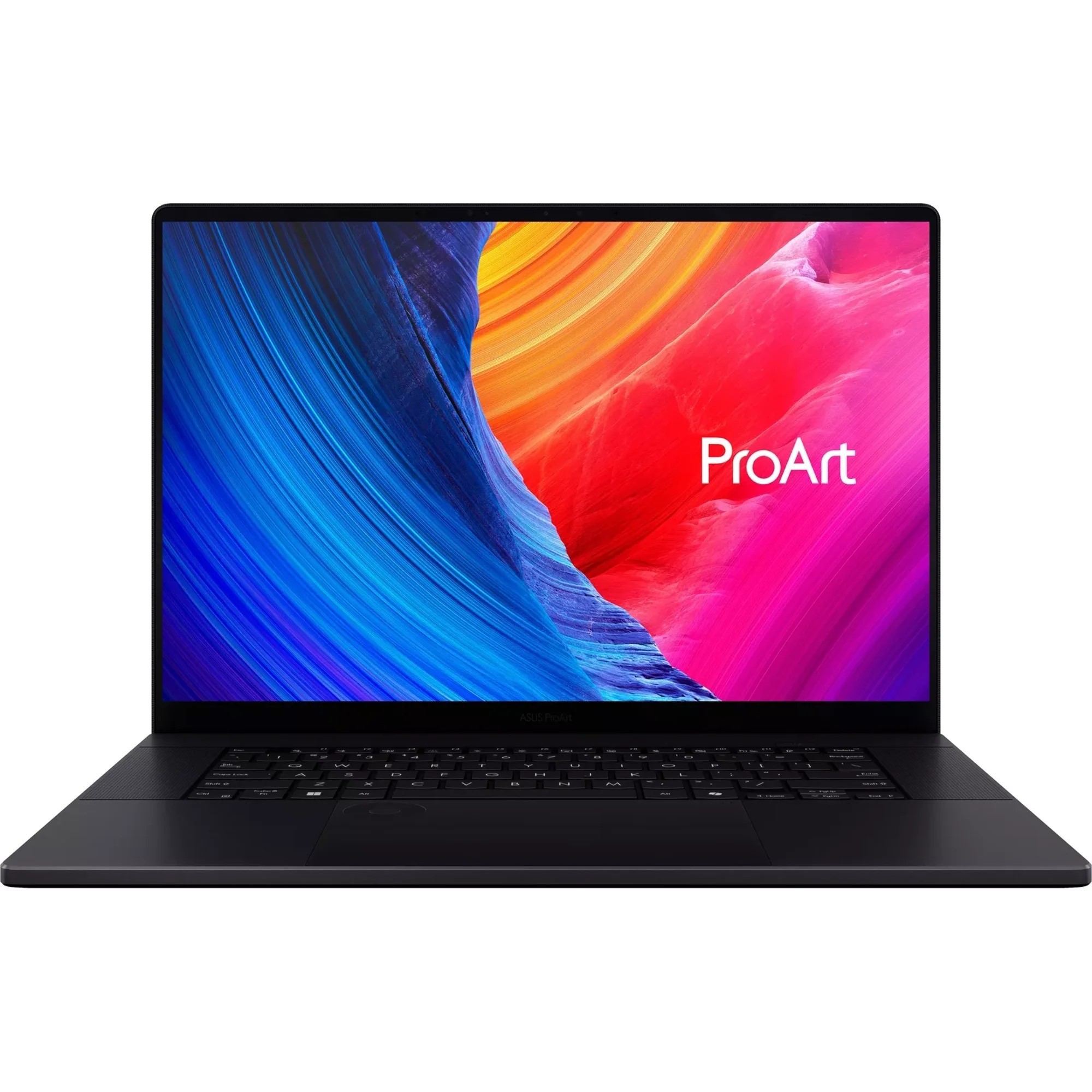
Best Windows
The most performative and power efficient graphic design laptop you can get for far less than a MacBook Pro — with an equally great display.

Best 2-in-1
If you turn your art into vectors, this thin and light convertible laptop offers the convivence of a drawing tablet without sacrificing the performance of a great graphic design laptop.
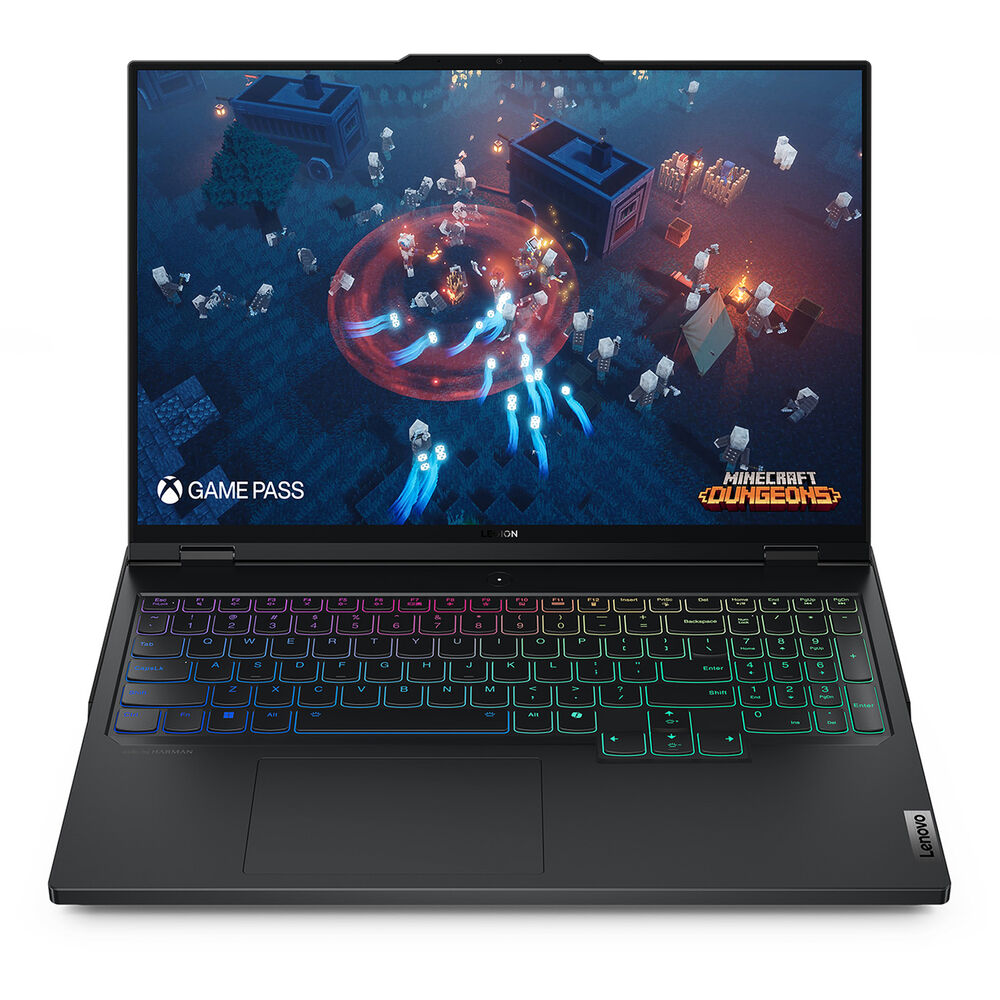
Best gaming
An powerful gaming laptop with a incredibly vivid and color-accurate display that graphic designers need.

Joanna Nelius has reviewed laptops and computer hardware since 2018. Her writing has appeared in The Verge, USA Today, Gizmodo, PC Gamer, and Maximum PC. She holds an MFA from Chapman University and works as a creative writing instructor.
Best overall

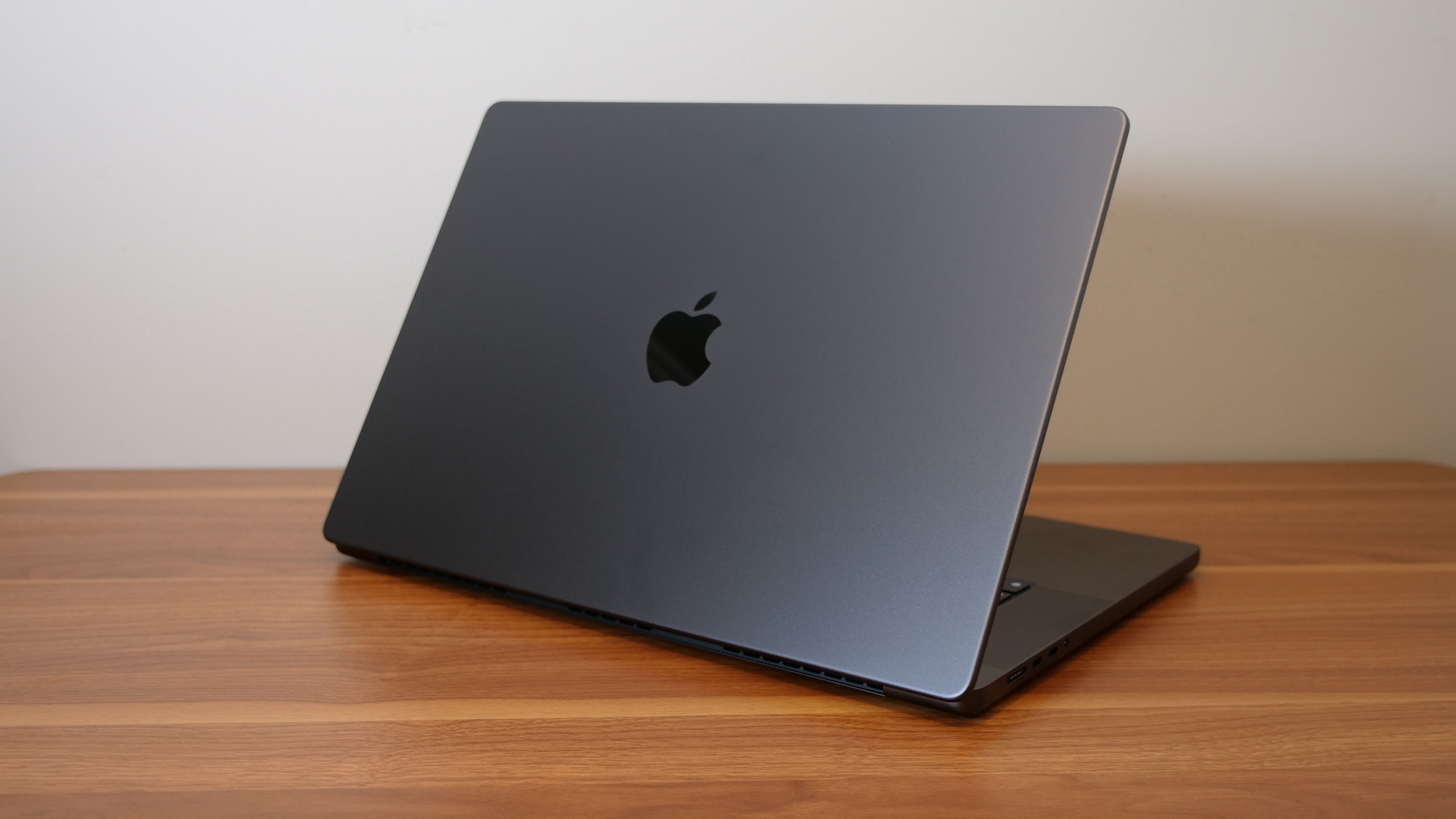
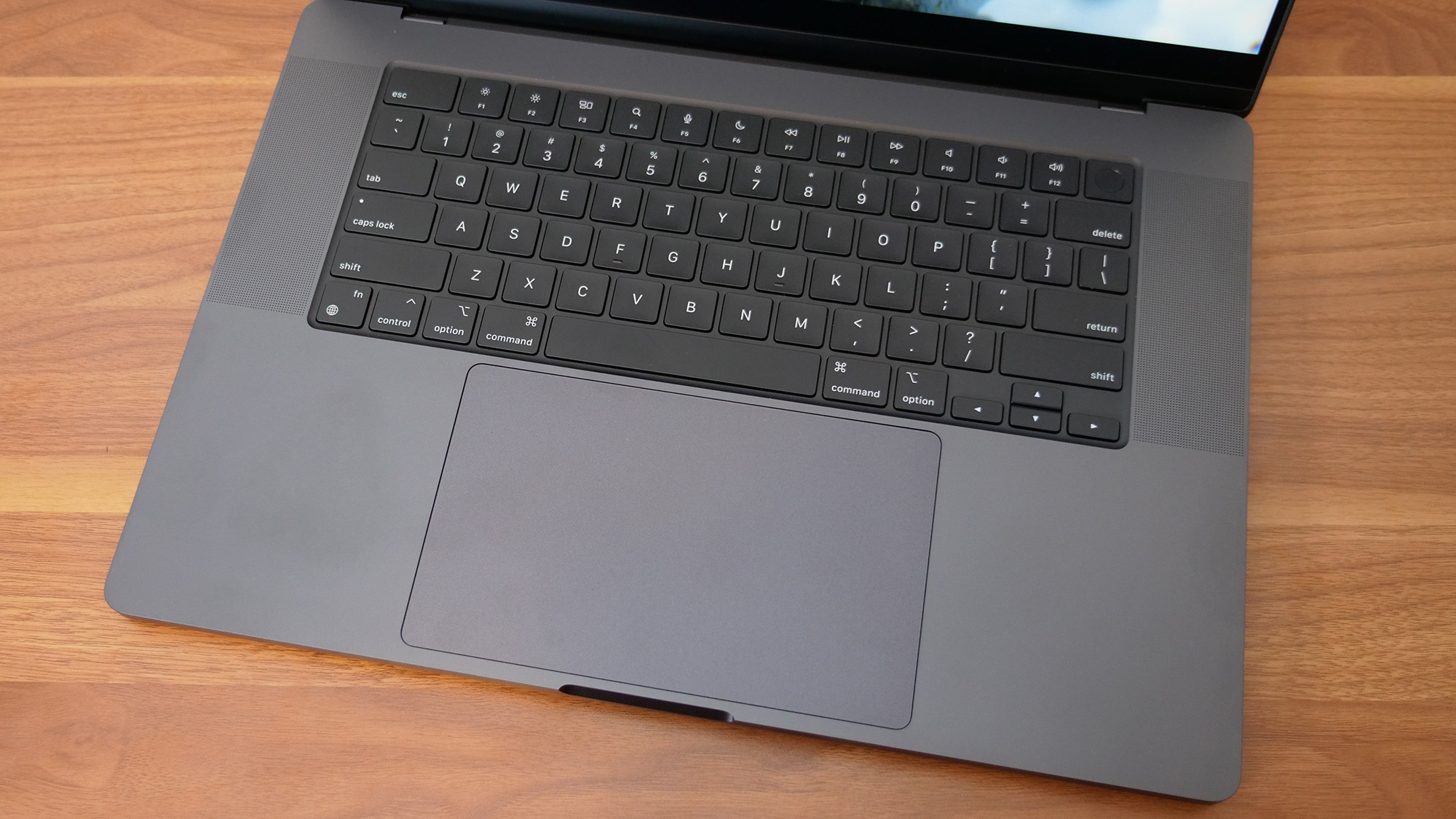
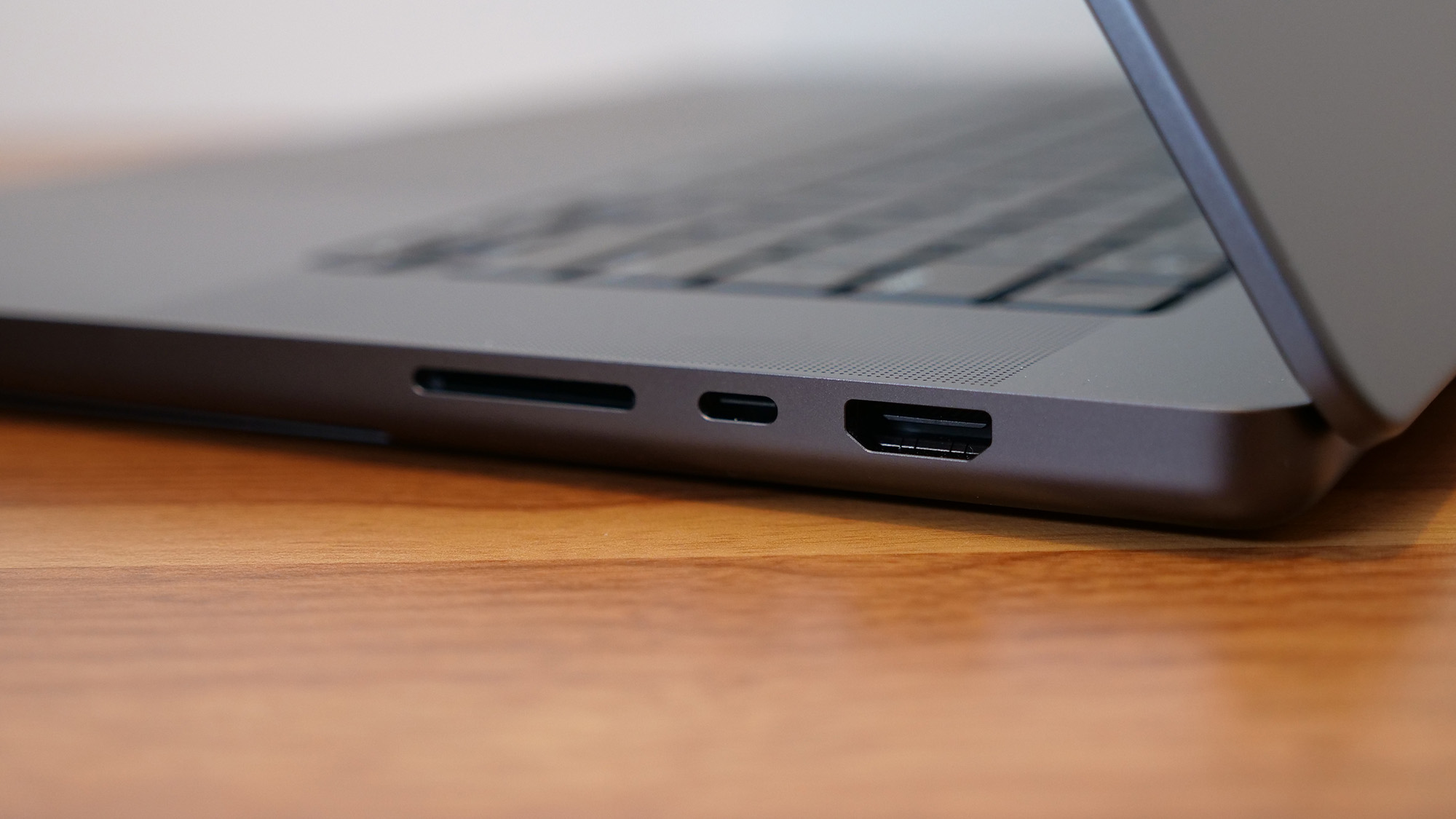
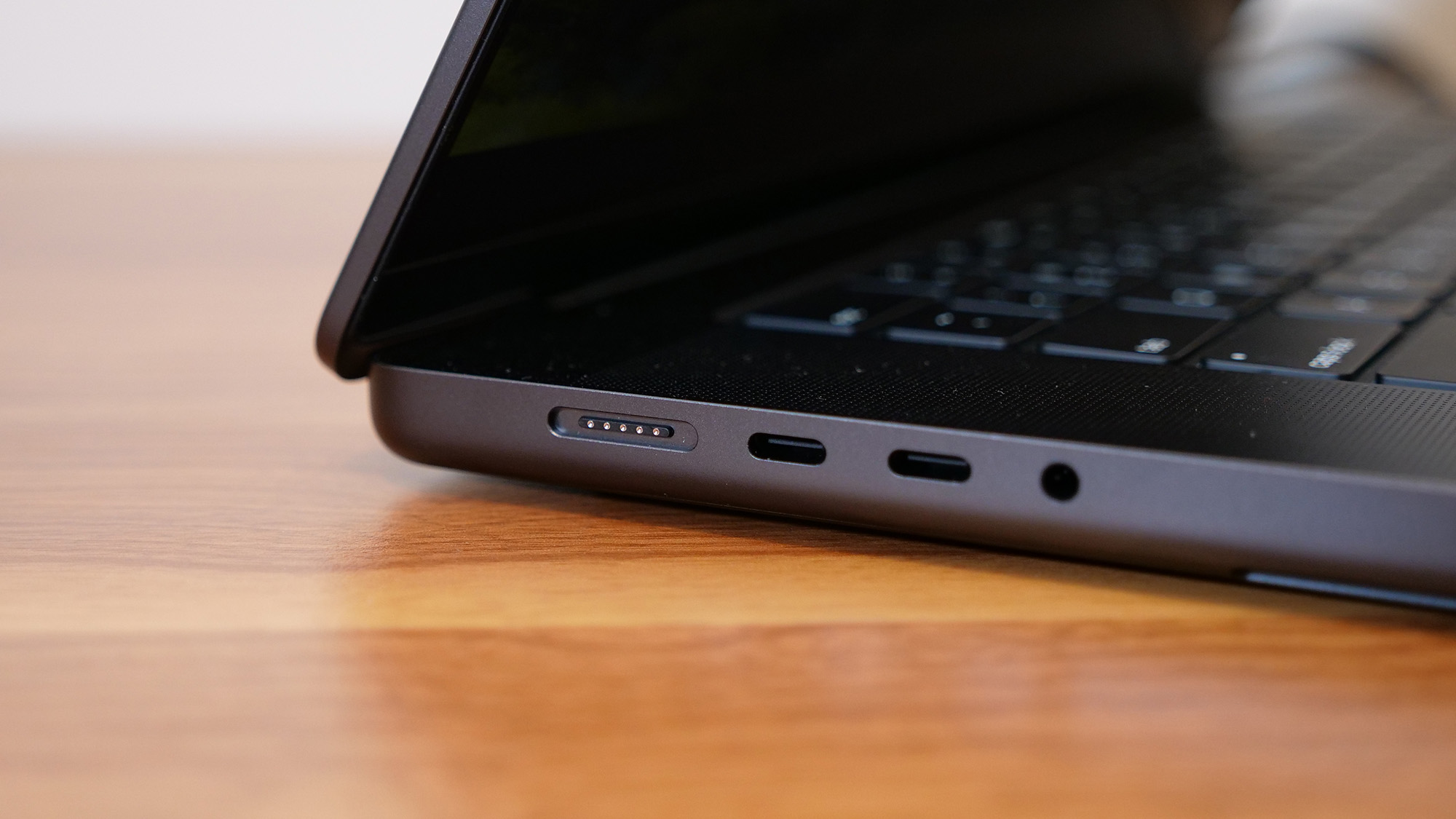
Specifications
Reasons to buy
Reasons to avoid
The Apple MacBook Pro 16 M4 Pro has wicked-fast performance, phenomenal battery life, an incredibly bright display, fantastic keyboard and trackpad, robust sound, and one of the best webcams we've ever seen in a laptop.
✔️ You want a light, portable workstation. It's the best around for graphic design, but it's also a quick, reliable laptop for web browsing, video calls, photo and video editing, and even gaming. (With nearly 21 hours of battery life!)
✔️ You want discrete GPU power without the separate card. And to spare yourself the usual noise and heat that comes with those kinds of laptops.
✖️ You don't need all the power it offers. It's not worth spending thousands of dollars on a MacBook Pro if you're not a graphic designer.
✖️ You already have an M3 Max. It's not worth spending thousands of dollars on a new laptop for a minor performance or battery life increase.
If you're a professional graphic designer who needs a new laptop that won't bottleneck the second you add one too many layers to your latest Photoshop project, we recommend the newest 16-inch Apple MacBook Pro with an M4 Pro processor.
Laptop Mag's managing editor, Sean Riley, describes it best in his review: "It's almost simultaneously the most powerful premium laptop we've reviewed while also offering the second-longest battery of any laptop we've tested." Our benchmark numbers mostly speak for themselves.
With 20 hours and 46 minutes of battery life, it lasts 7 hours longer than the average premium laptop. It also outshines them all in the Geekbench 6 multicore benchmark with a score of 22,822 — over a 100% speed increase compared to the average premium laptop (10,492).
I realize numbers alone might not be convincing enough, so I asked a professional graphic designer (my fiancé) with over a decade of experience creating company logos, website wireframes, and user interfaces for video games how he felt about his new MacBook Pro 16 M4 Pro. He didn't convey his excitement in words at first. He made happy grunting noises and told me it's the best laptop he's owned during his career. (If you are also upgrading from an M2 Max, you might need help picking your jaw up off the floor like he did.)
Everything else about this MacBook Pro is just as good or better than previous generations. It's still expensive, but it's our best overall pick for a reason.
See our full Apple MacBook Pro 16 M4 Pro review.
Best budget

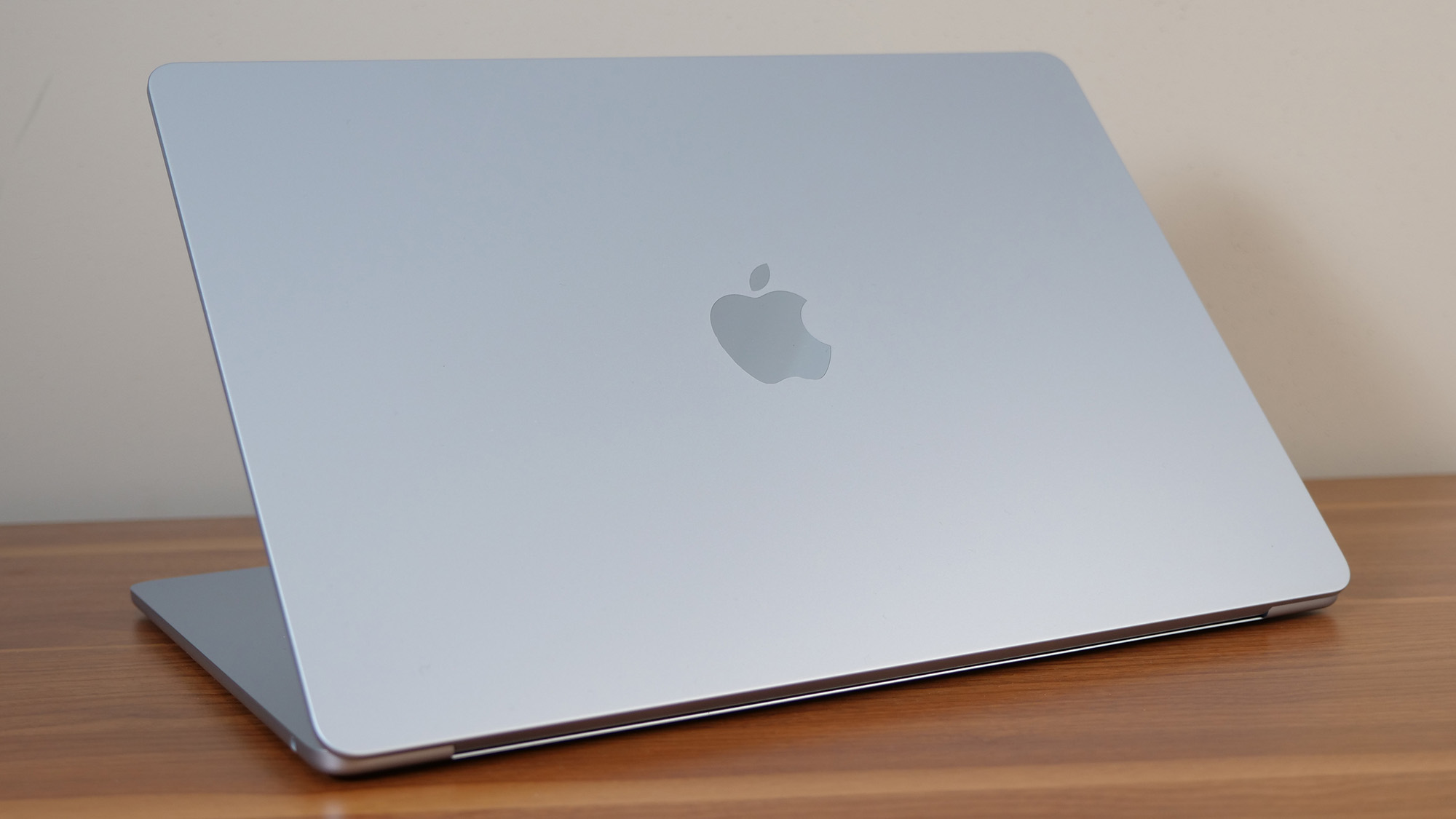
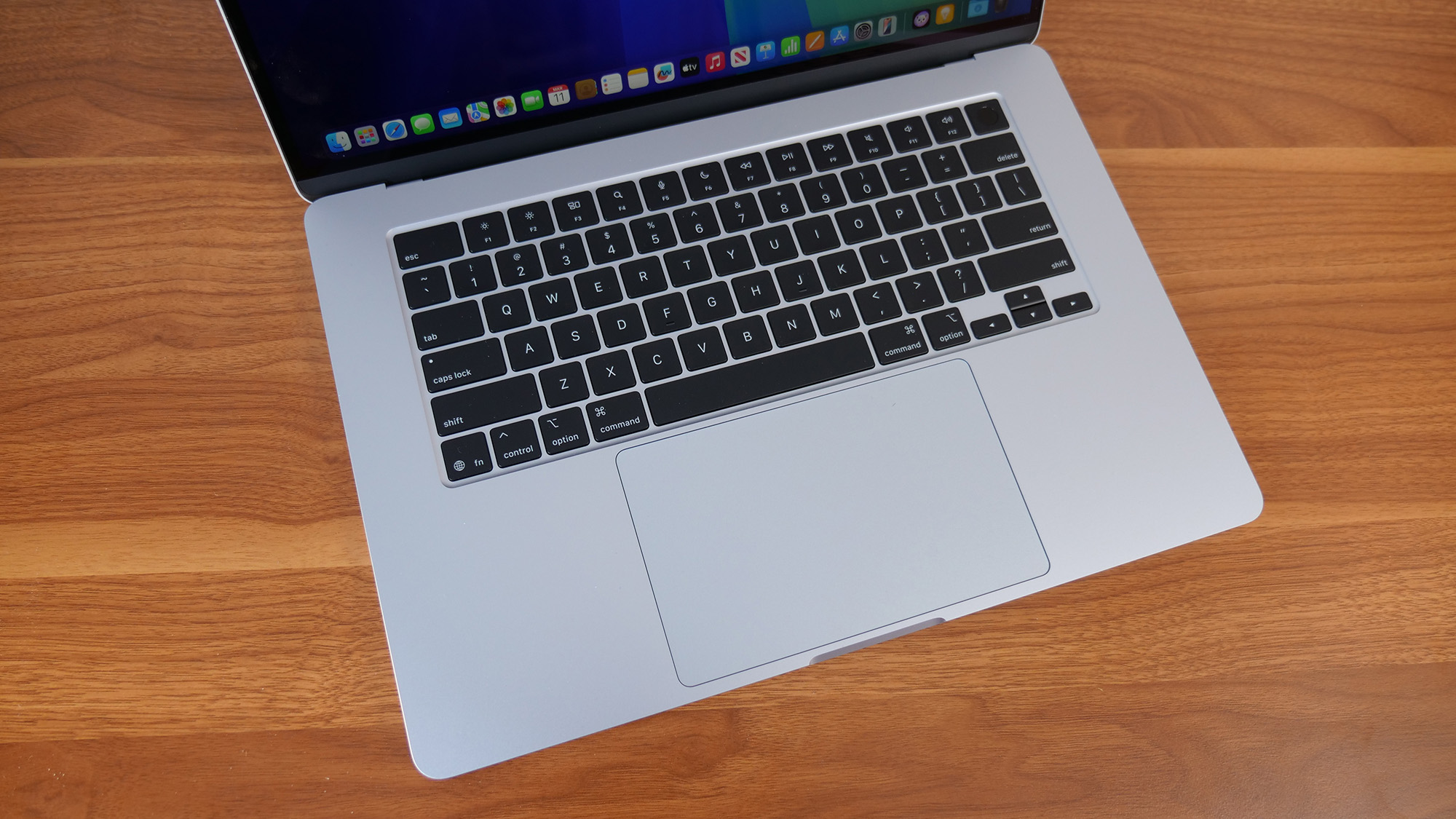
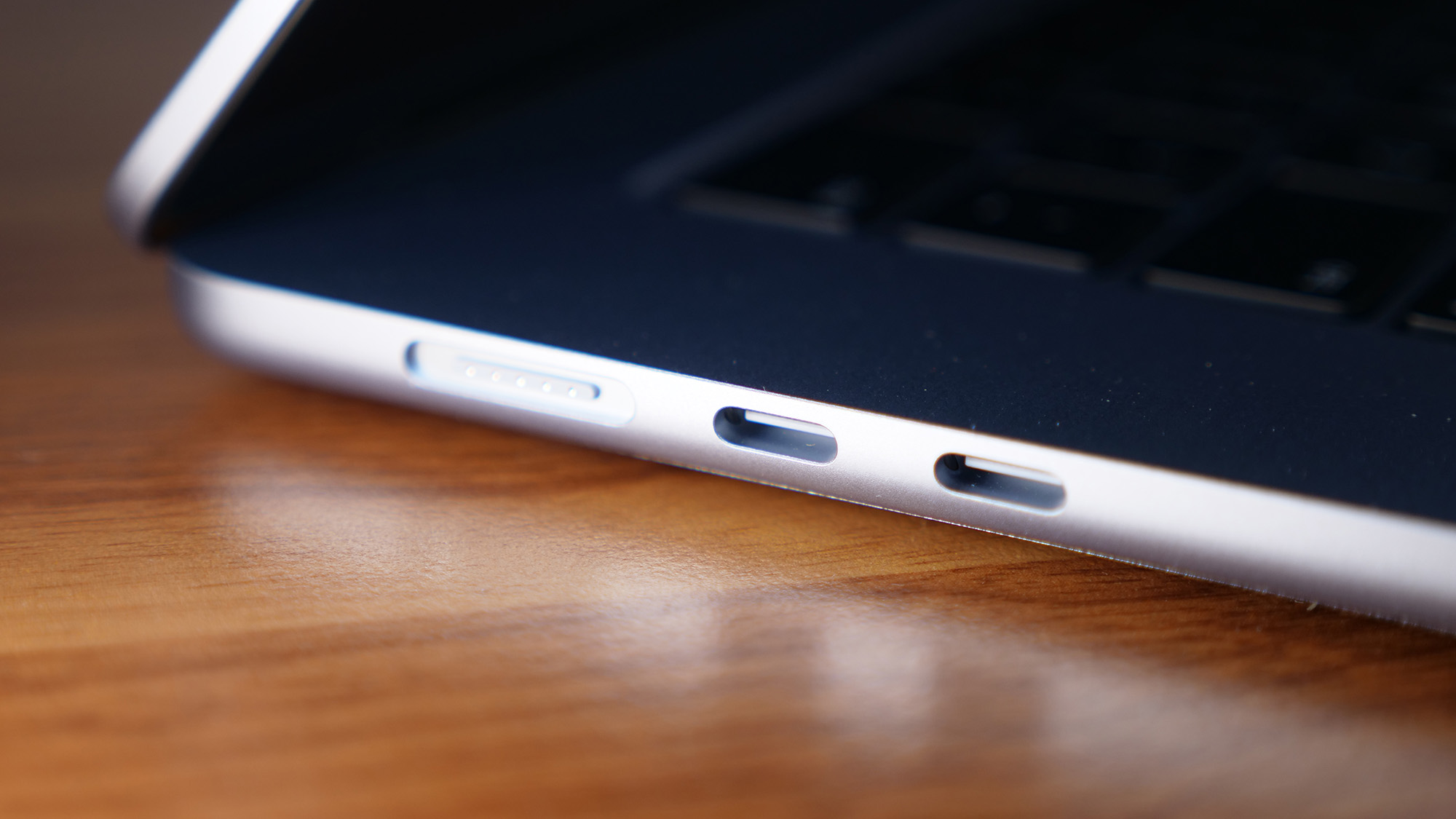
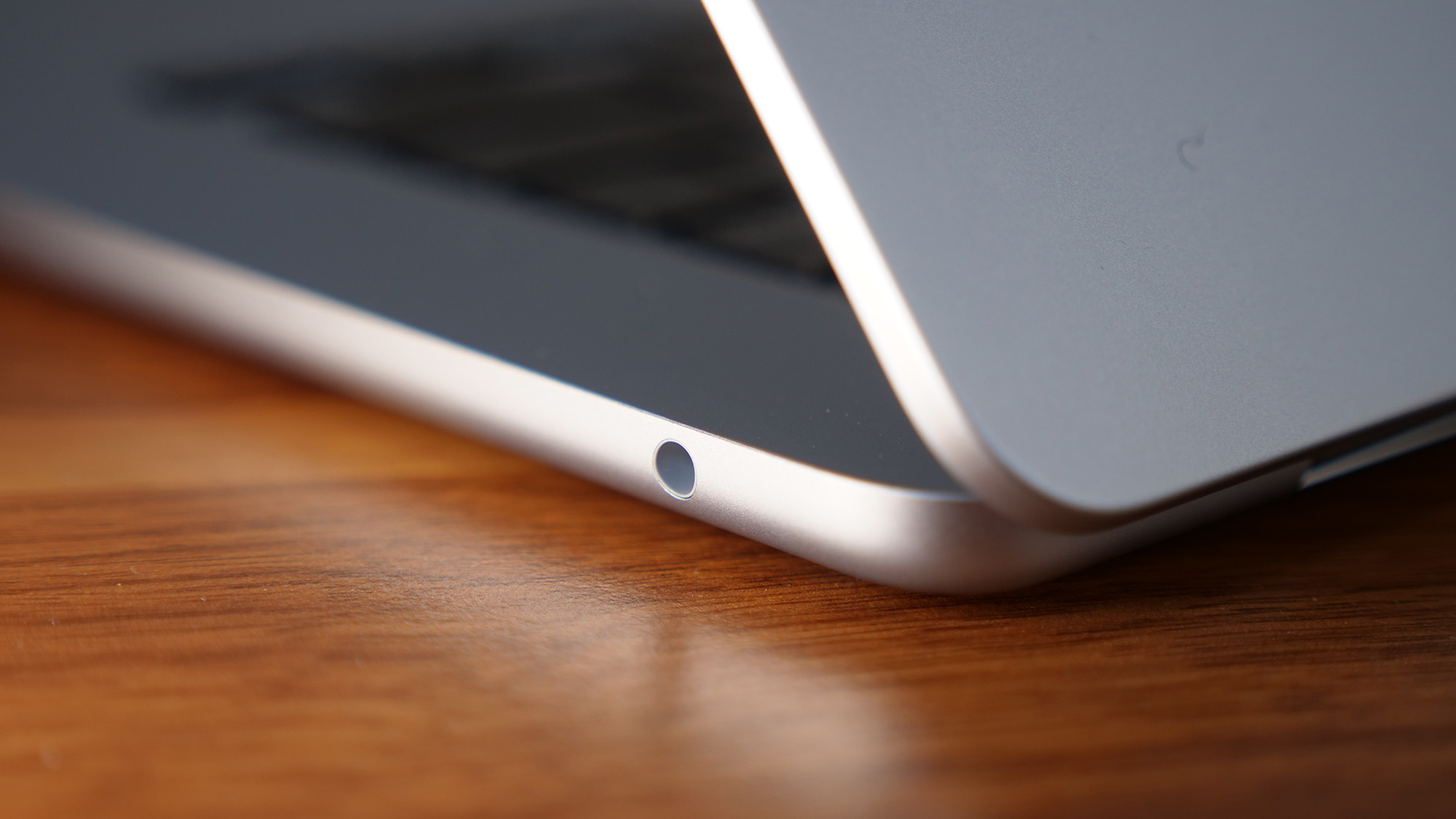
Specifications
Reasons to buy
Reasons to avoid
The Apple MacBook Air 15 M4 is thin, light, powerful, and has a long-lasting battery. It has nearly everything a graphic designer on a budget (or design student) needs in a laptop.
✔️ You want a better sound system. The 15-inch air has six speakers and force-cancelling woofers compared to the 13-inch's four speakers (no woofers). Music and other audio will sound closer in quality to the MacBook Pro.
✔️ You want an easy-to-carry laptop. This one weighs just over 3 pounds and is under a half-inch thick. Check and check!
✖️ You don't want to spend a lot of money on upgrades. Adding more RAM or increasing the storage size is still as expensive as ever, despite Apple dropping the starting price of the Air M4.
✖️ You need larger or more color-accurate display. The Air's color accuracy isn't as good as the Pro, and if you know you want a 16-inch screen, its 15.3-inch display might be too small for your work.
15-inch laptops are increasingly rare these days, but as Laptop Mag managing editor Sean Riley writes in his review, the new Apple MacBook Air 15 M4 "deserves to be in the conversation." He gave it 4.5 stars for a good reason! It offers many of the same benefits for graphic designers as the pricier Pro M4, and its performance and battery life remain unparalleled among many of its budget competitors.
Its CPU multicore performance is nearly 38% faster than the 15-inch Air M3, according to our testing. In our real-world video transcoding test, the Air M4 converted a 4K video to 1080p in just under 5 minutes — 2 minutes faster than the Air M3.
The Air M4's display isn't the most vibrant or color-accurate screen you can get, but it covers a larger portion of the DCI-P3 color gamut compared to last year's Air M3 (83.5% versus 77.8%). For graphic designers on a budget who want the largest laptop display possible, that's less of a compromise between the Air M4 and 14-inch M4 Pro — and you still get Apple's True Tone technology, which adjusts how colors are displayed depending on the lighting.
Its max brightness is 476 nits, just like last year's model, and its battery still lasts 15 hours, too. The Air M4's other features have remained mostly the same or improved, which is especially notable considering Apple dropped the 15-inch Air M4's starting price by $100.
If you currently have an Air M2 or earlier, you're in the best position to get the most out of your money by upgrading.
See our full Apple MacBook Air 15 M4 review.
Best Windows

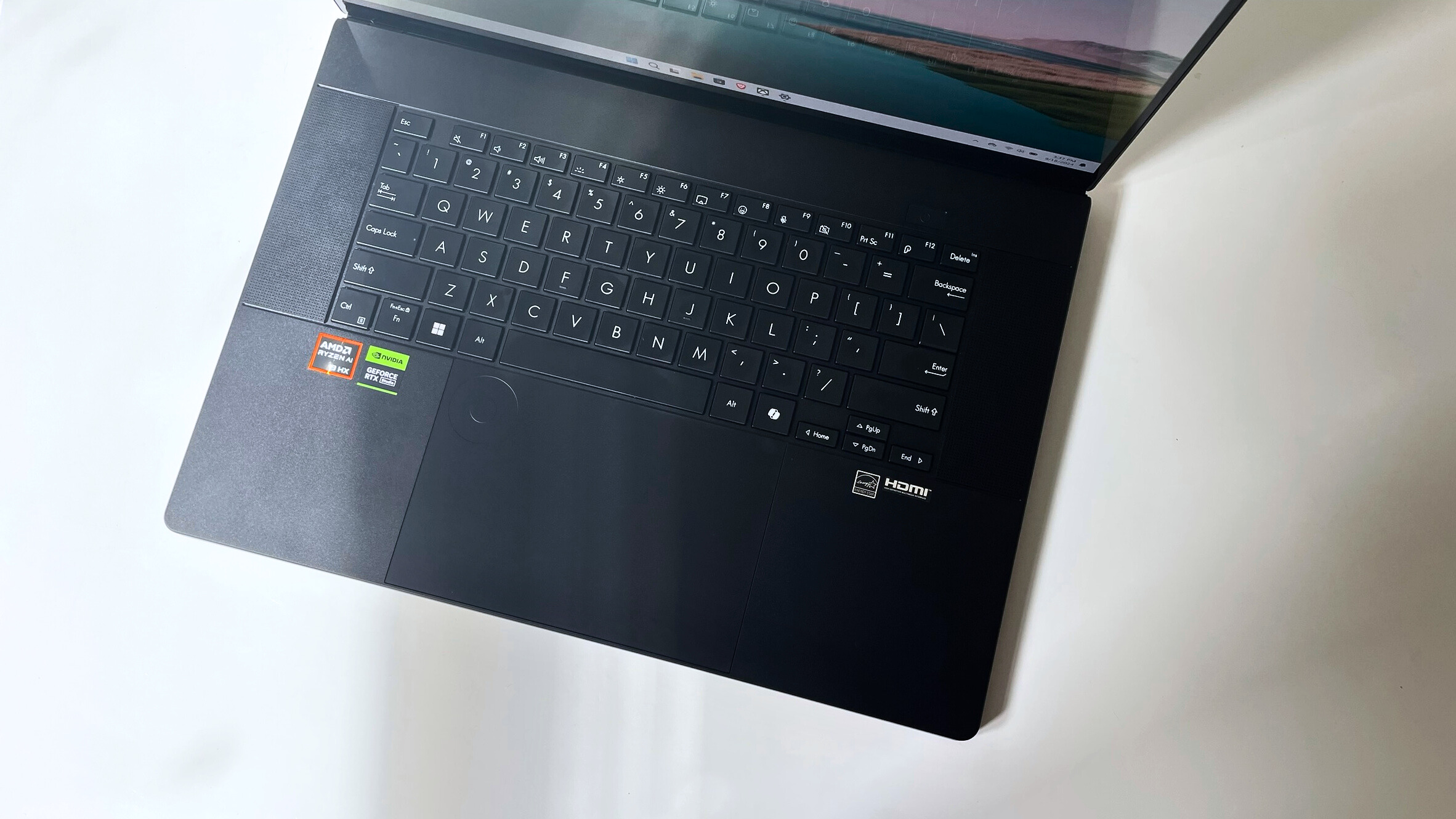

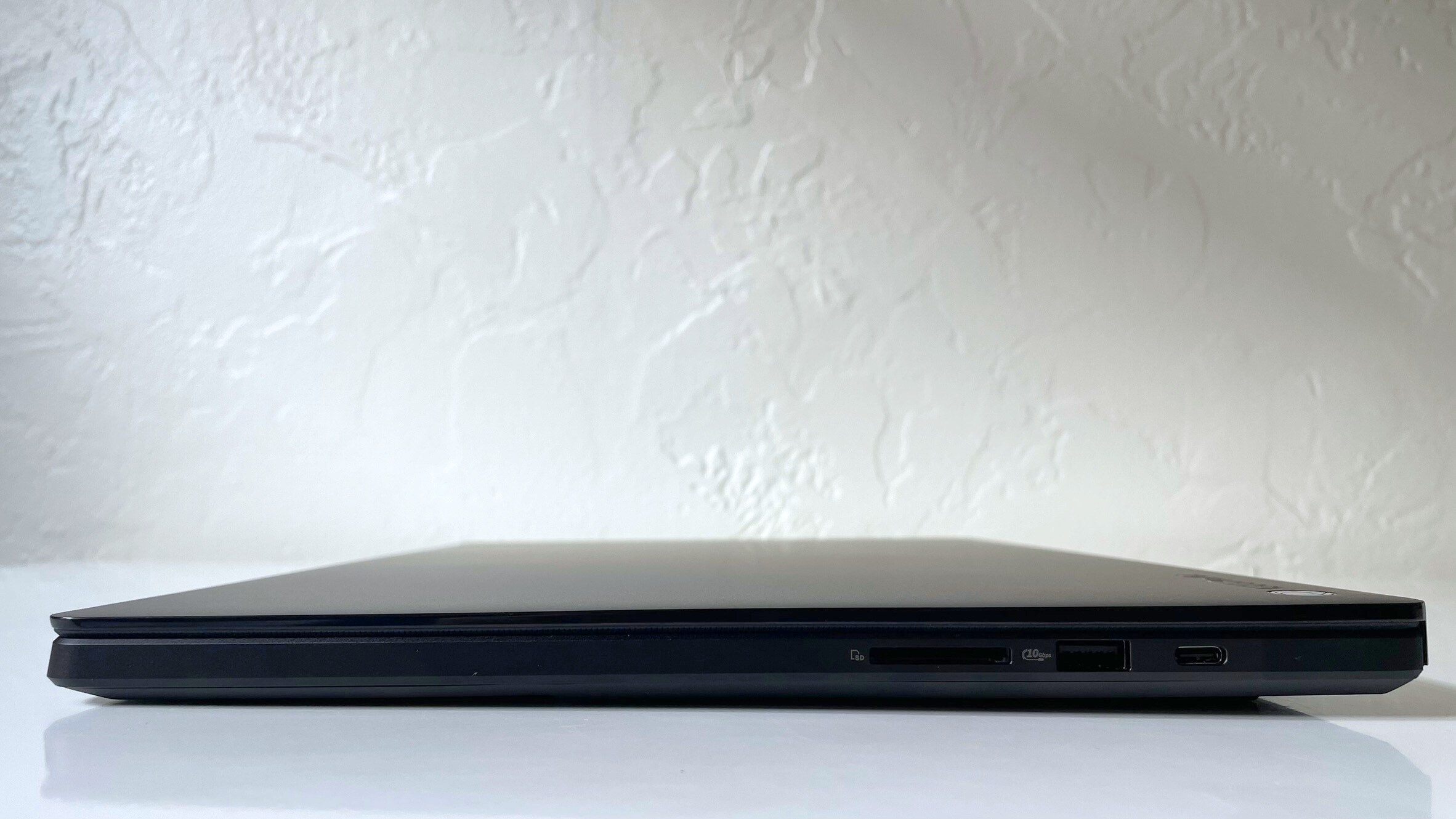
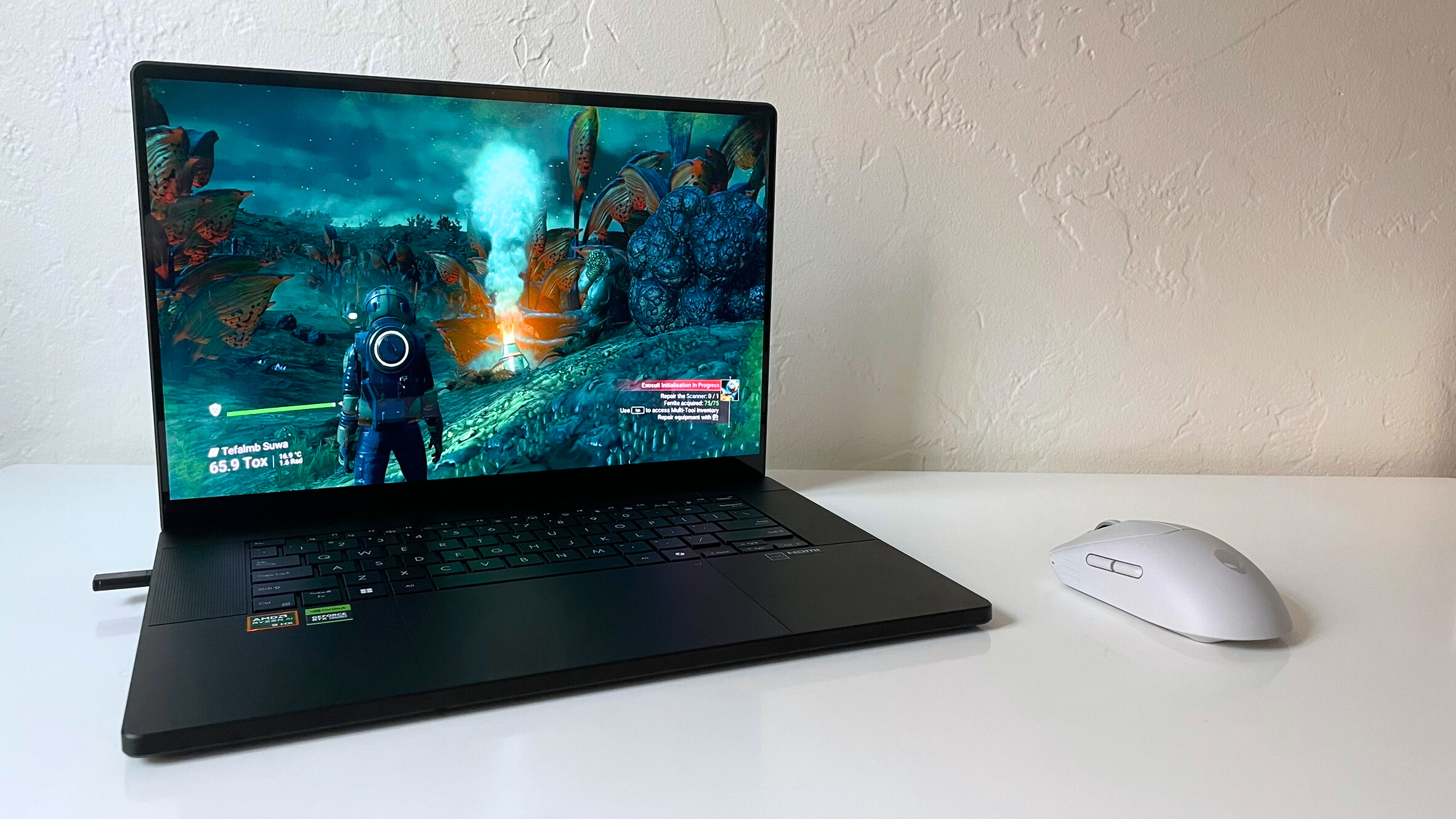
Specifications
Reasons to buy
Reasons to avoid
The Asus ProArt P16 is $1,000 less than the MacBook Pro but still has the same performance and display quality you'd expect out of one.
✔️ You need a fast laptop. Between multitasking, rendering, transcoding, and everything else you needed done yesterday, this laptop won't hinder your workflow.
✔️ You need more colors than than a Crayola box. This laptop covers a large portion of the DCI-P3 color gamut, making is a good choice for video or photo editors.
✖️ You're unwilling to compromise on battery life. The Asus ProArt P16 is a great laptop, but with under 10 hours of battery life, it's one major area where it cannot compete with the MacBook Pro.
✖️ The apps you want to use are only on macOS. If you already use Adobe software, this isn't something you have to worry about, but if you use something like Sketch you're out of luck.
If you're more comfortable using Windows, the Asus ProArt P16 is a "stellar example of what a creator laptop should be: powerful, reliable, and stylish," as our reviewer, Stevie Bonifield, said. You don't have to pay MacBook Pro prices to get suburb performance in a thin and light chassis with a beautiful design that's just as easy on your eyes as it is on your wallet.
While I'd normally recommend a laptop with a wider color gamut for graphic designers, the ProArt P16 covers a high enough percentage of the DCI-P3 (85.5%). If you want this laptop for professional video editing that could be more of a concern, where the AdobeRGB color gamut is more useful for graphic designers.
Just as important as color accuracy is performance; this laptop's AMD Ryzen AI 9 HX 370 processor, 32GB of RAM, and Nvidia RTX 4070 graphics card powers it to a Geekbench 6 multicore score of 15,286, way beyond the average premium laptop. Commonly used graphic design programs like Adobe Illustrator load in a snap, and the ProArt P16 has the right amount of RAM and CPU cores to prevent the system from getting too bogged down with all the processes Photoshop runs in the background.
That stellar performance played out in Laptop Mag's Handbrake benchmark, transcoding a 4K video to 1080p in 3 minutes and 15 seconds, much faster than the average premium laptop (7:58). (Yes, the ProArt P16 also makes a fantastic video editing laptop.)
Its battery life is a letdown, though. Expect up to 9 hours and 32 minutes if you use this laptop for web browsing, with the display brightness set to 150 nits. If you're manipulating images with dozens of vector masks at full brightness (356 nits), the battery will drain much faster. Just something to be mindful of if your workspace doesn't have a nearby outlet.
See our full Asus ProArt P16 review.
Best 2-in-1
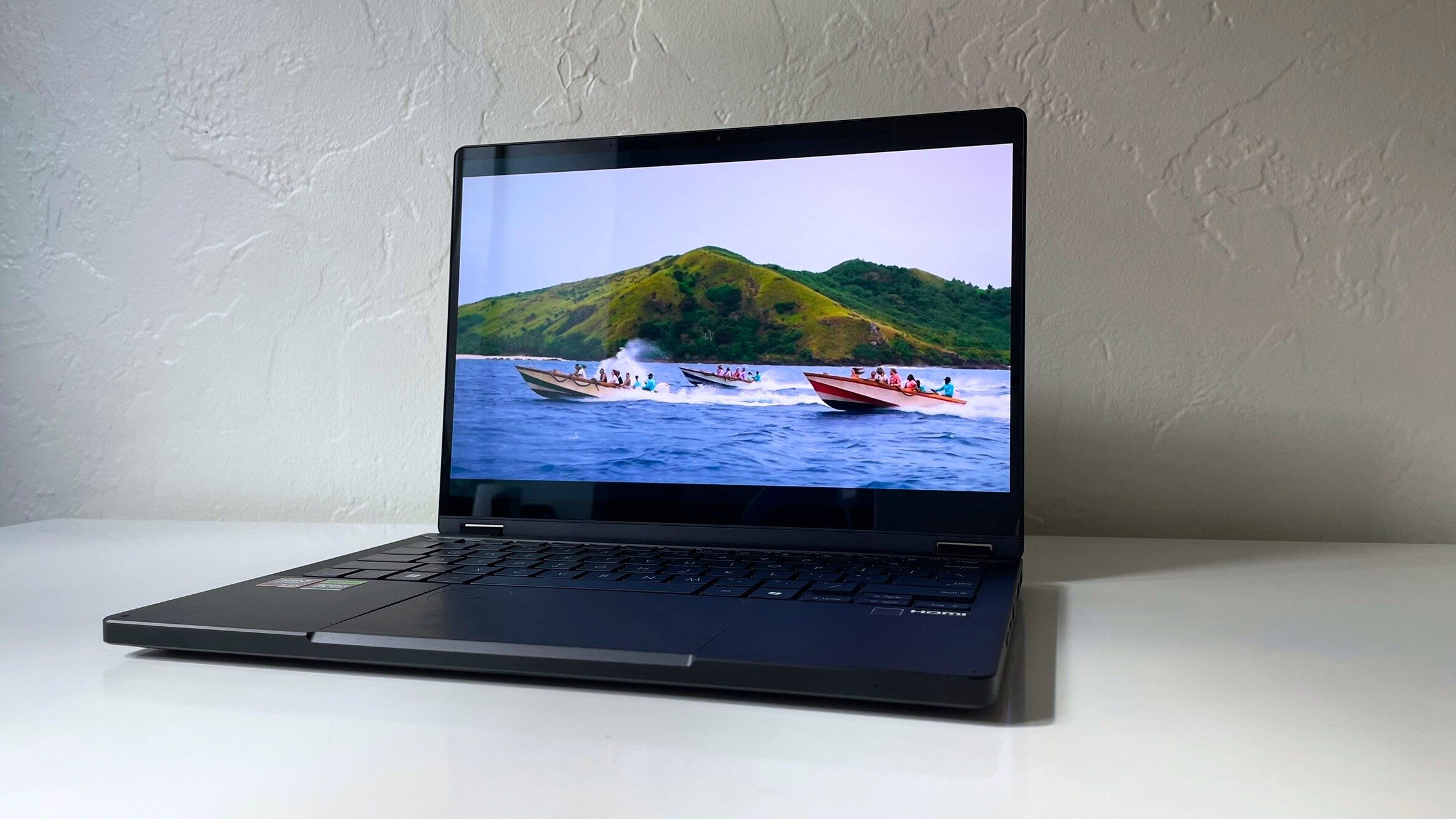
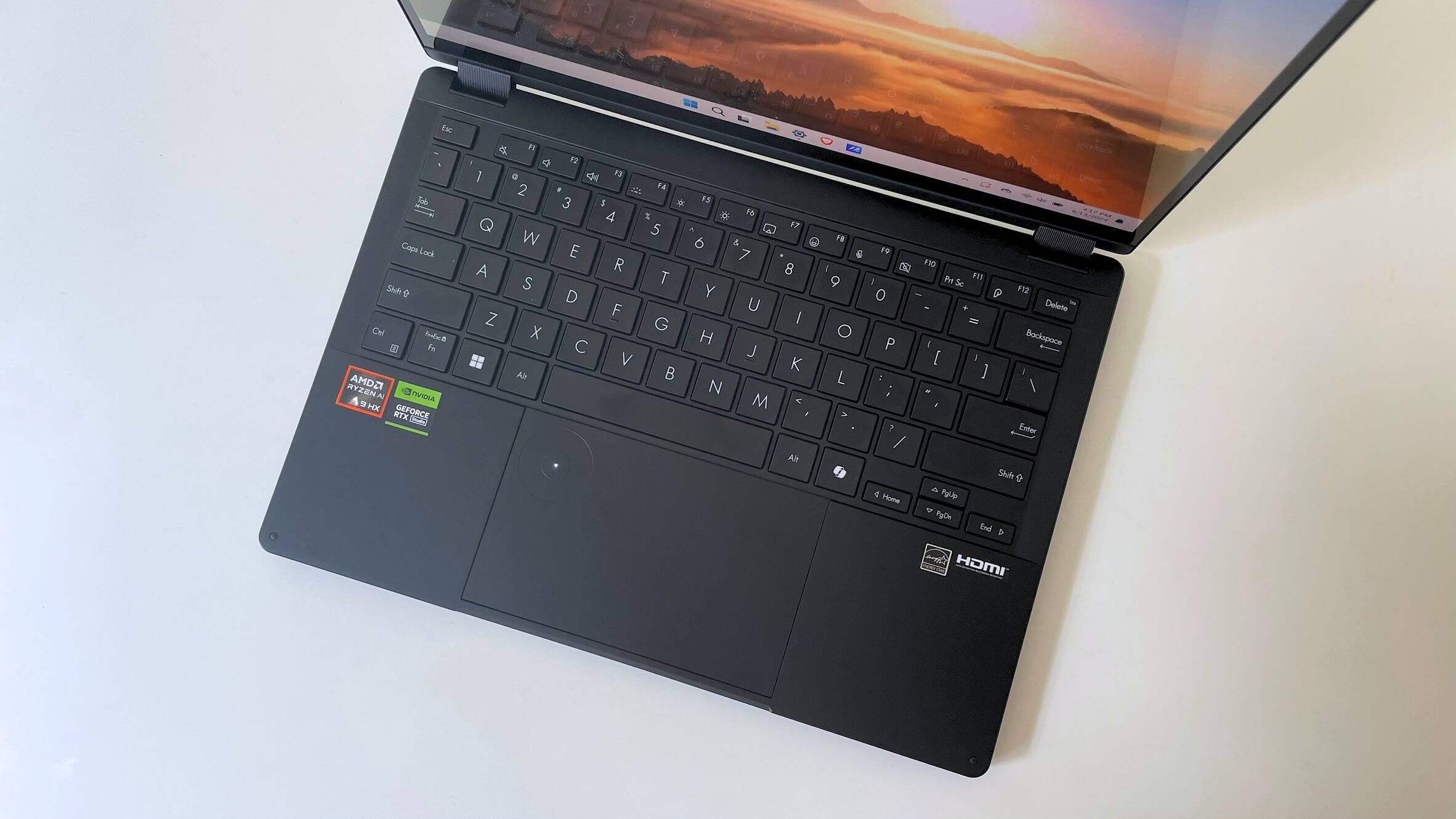



Specifications
Reasons to buy
Reasons to avoid
The Asus ProArt PX13 is a compact 2-in-1 laptop with excellent portability and versatility. Configured with a discrete graphics card, designers can take advantage of any hardware acceleration features their program might offer if they need a speed boost.
✔️ You want a compact, portable laptop. 2-in-1s tend to be on the bulky-side, but not this one. At 0.62 inches thick and weighing 3 pounds, the ProArt PX13 is anything but cumbersome, even as a drawing tablet.
✔️ You like to customize keybindings. The special dial embedded in the touchpad functions as both a precision control wheel inside design programs, as well as a function wheel for Windows as a whole (adjusting volume, screen brightness, etc.).
✖️ You need extra wide color coverage. This laptop's display covers 80% of the DCI-P3 color gamut, which is lower than the ideal minimum, especially for professional graphic designers. However, it's worth noting that OLED displays typically underperform on this test.
✖️ You need more than 10 hours of battery life. The PX13 fell shy of that in our web browsing tests. We normally recommend you buy a laptop that can last at least 11 hours on a single charge, especially if you're using programs that quickly drain the battery.
If you start your design process with hand-drawn sketches on a tablet but are tired of importing them to a separate device, the Asus ProArt PX13 is "a top choice for creators looking for a compact laptop," as Laptop Mag contributing writer Stevie Bonifield, sums up nicely.
This laptop's 13.3-inch display offers almost the same amount of space as a standard-sized piece of paper, so it keeps a good balance between portability and having enough room to draw. It weighs 3 pounds, which is heavier than the average 100-page sketchbook, of course, but that's incredibly lightweight for a laptop — especially a 2-in-1.
If you draw directly inside a graphic design program, you won't have to worry about your lines lagging behind your stylus. The ProArt Px13 performed exceptionally well in our PugetBench Photoshop and HandBreak video transcoding tests, meeting or exceeding what its competitors are capable of achieving. Coupled with a discrete RTX 4050 graphics card and 32GB of RAM, you likely won't have to manually adjust the memory allocation to your graphic design program.
Graphic designers who work with the DCI-P3 color gamut might find the display's coverage on the low side with 80% of that color space in our testing. While this is below the recommended 85% minimum, it's important to note that OLED displays typically underperform on this test, so the true number is almost certainly above 85%.
What might be a concern for anyone considering this laptop is its battery life: 9 hours and 49 minutes. That's not terrible for a creator laptop, but it's less than the 11-hour minimum we recommend.
See our full Asus ProArt PX13 review.
Best gaming
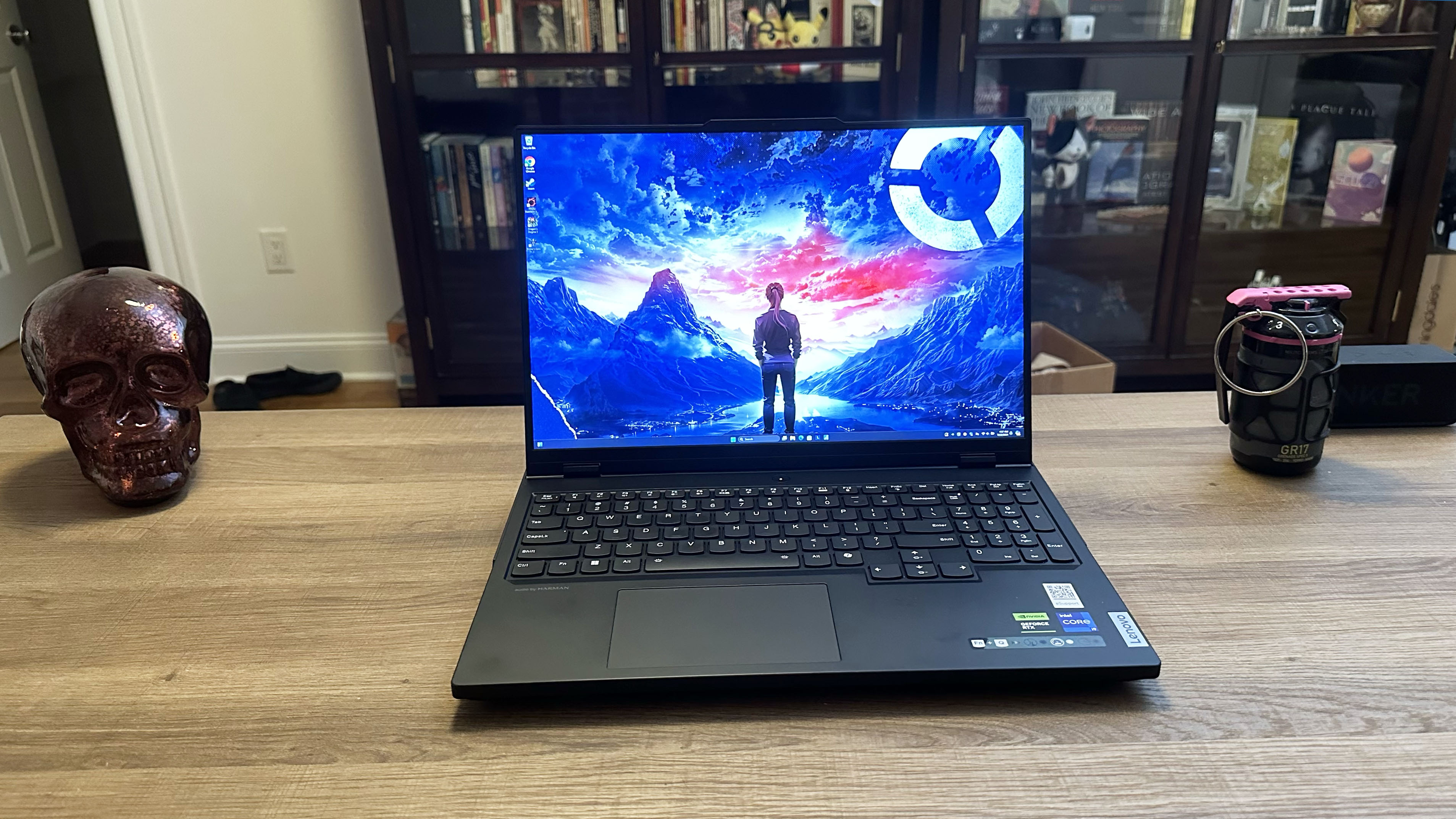
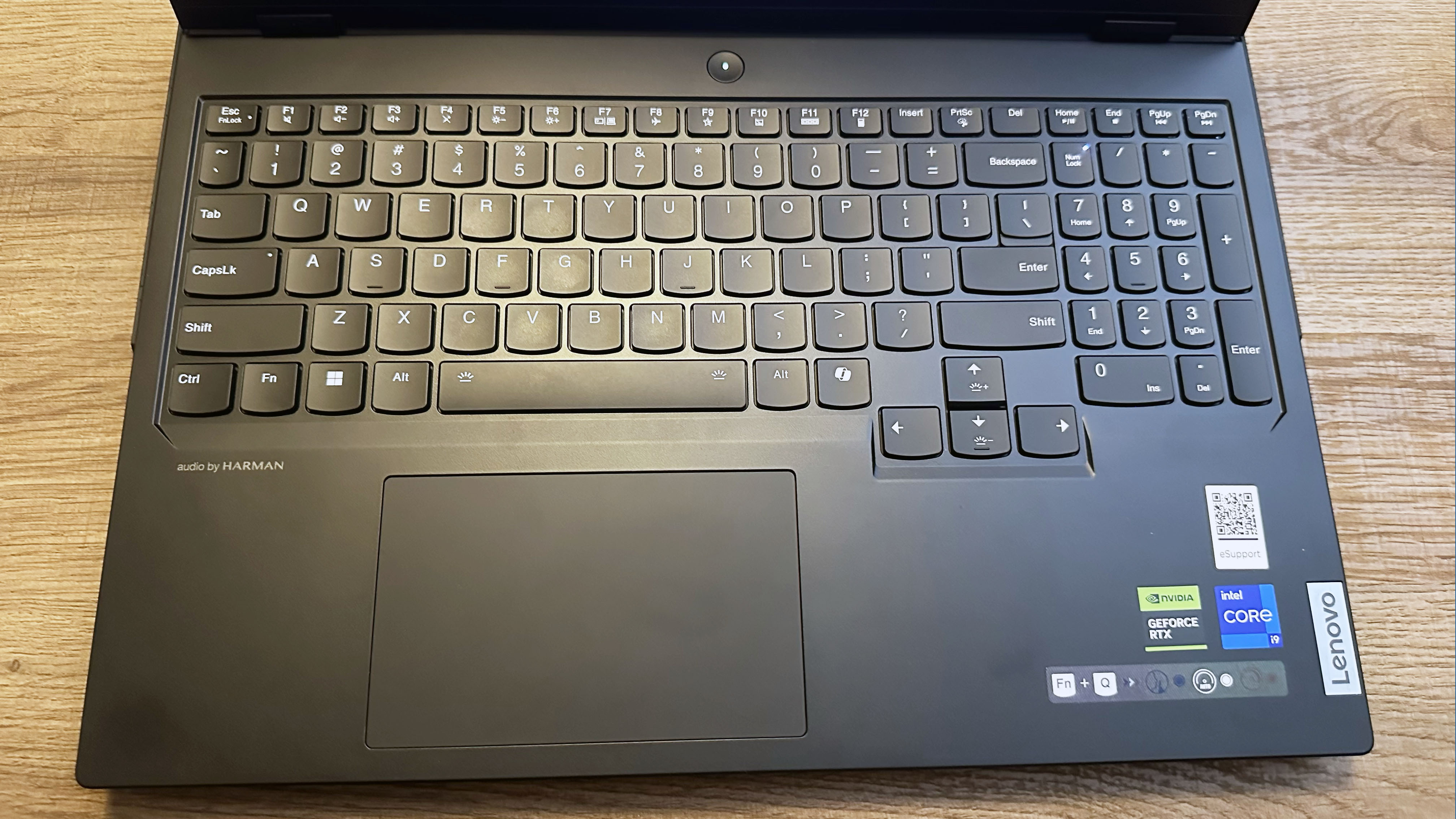
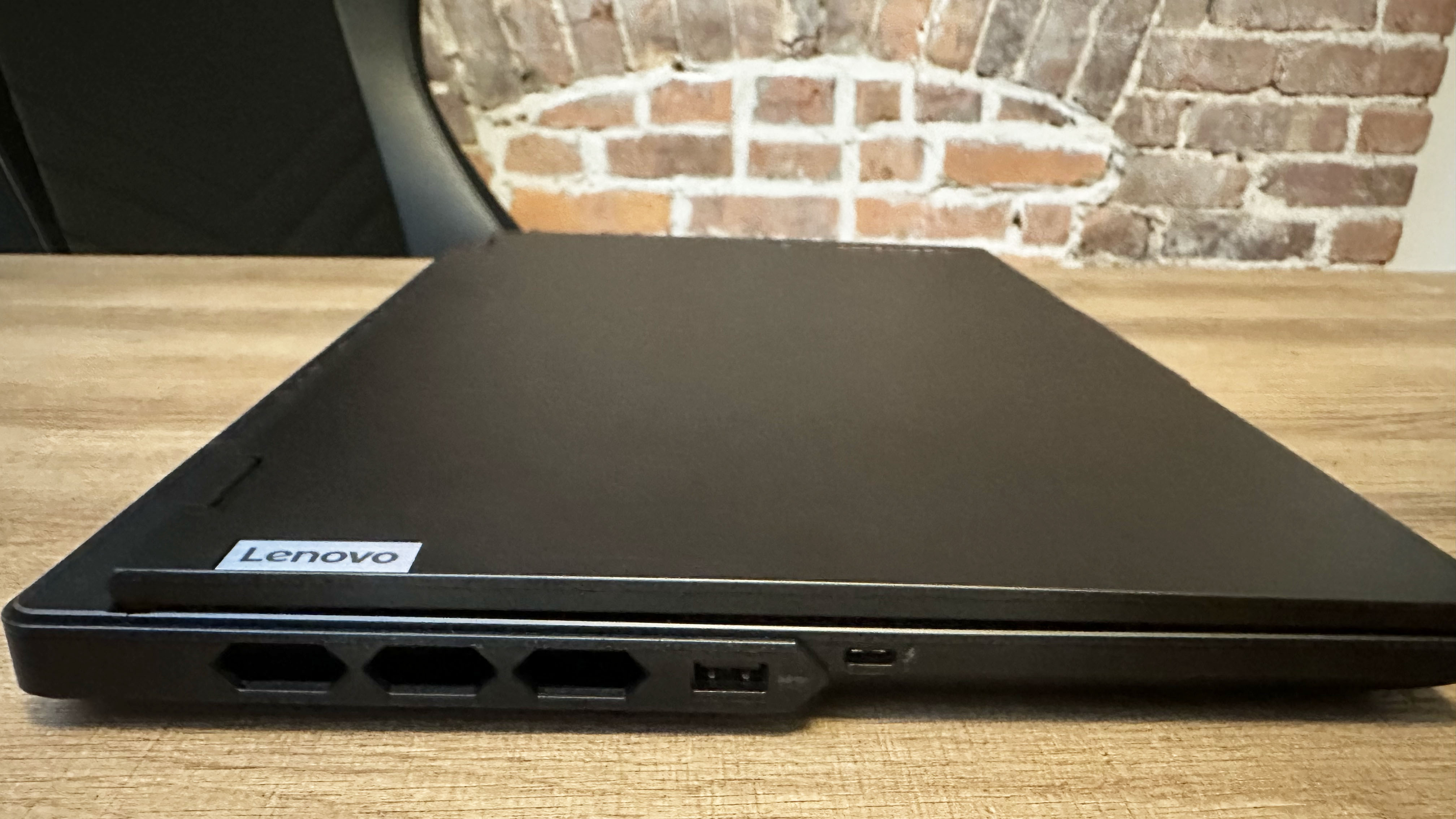


Specifications
Reasons to buy
Reasons to avoid
The Lenovo Legion Pro 7i strikes a great balance between performance and affordability, but it also has a stunning display for graphic design work.
✔️ You want a stellar gaming laptop, too. It hits all the gold standards of a gaming laptop in performance, price, and features.
✔️ You're willing to throw down some serious cash, but not too much. With awesome specs and features in a package that costs less than $2,500, this laptop is an excellent value for what it offers.
✖️ You want something thin and light. This gaming laptop is neither of those things. It's much more of a desktop replacement.
✖️ You want a high-resolution, OLED display. While it has a great display for a gaming laptop, it's not as sharp or as bold as it could be for some graphic design work.
If your graphic design work takes you into the realm of video game UI (like my fiancé's did for a period of time), you most likely will need a gaming laptop — one with "powerful performance, smooth graphics," and a "stunning display," as our staff writer, Madeline Ricchiuto said in her review of the Legion Pro 7i Gen 9.
Those are its stand-out features, especially at a price compared to some competing gaming laptops that are less powerful. For under $2,500 (on sale), you get an Intel Core i9-14900HX processor and an Nvidia GeForce RTX 4080 GPU with 12GB of VRAM. Combined with 32GB of system memory, this laptop spiked into the high-90s and low-100s in our gaming benchmarks.
Its display is also suitable for UI design work, averaging 108.7% of the DCI-P3 color gamut — way beyond what most graphic designers probably would need. It also gets super bright, averaging 456 max nits in Laptop Mag's testing. It does only have a 1600p native resolution, but that may or may not be a deal breaker based on the kind of work you primarily do on your laptop.
Just keep in mind that if you go with this laptop, it's chunky, 1.01 inches thick, and weighs 5.7 pounds — definitely a desktop replacement. You can technically carry it around if you want to, but after a week (at most) of doing that, I can imagine the process becoming a hassle.
See our full Lenovo Legion Pro 7i Gen 9 review.
Benchmark comparisons
Click to view chart data in table format
| Row 0 - Cell 0 | Apple MacBook Pro 16 M4 Pro | Apple MacBook Air 15 M4 | Asus ProArt P16 | Asus ProArt PX13 | Lenovo Legion Pro 7i Gen 9 |
Geekbench 6 (Higher is better) | 22,822 | 14,921 | 15,286 | 15,203 | 17,329 |
Handbrake time ((MM:SS), lower is better) | 02:38 | 04:57 | 03:15 | 03:36 | 03:11 |
Battery life - Web surfing (HH:MM) | 20:56 | 15:14 | 09:32 | 09:49 | 04:29 |
SSD transfer speeds (MBps, higher is better) | 6640.5 | NA | NA | NA | 2025 |
BlackMagic Write (Higher is better, MBps) | 6640.5 | 3335.1 | NA | NA | NA |
BlackMagic Read (Higher is better, MBps) | 5353.7 | 3012.5 | NA | NA | NA |
DCI-P3 Color Gamut (Higher is better) | 81.4% | 83.5% | 85.5% | 80.0 | 108% |
Display Brightness (Nits, higher is better) | 565 | 476 | 356 | 356 | 456 |
Hottest temperature (95 degree comfort threshold) | 90.5 | 90.0 | 87.6 | 87.6 | 106.7 |
Recently reviewed
Not every laptop can make our best laptops for graphic design page. (We wouldn't be doing you that much good if that were the case!) We review new laptops every week and over 100 laptops yearly, so here's a look at our most recently reviewed laptops that didn't make this page either due to a fault, battery life, performance, or something else.
Alienware 16 Area-51 | Intel Core Ultra 9 275HX | Nvidia GeForce RTX 5080 | 32GB RAM | 1TB SSD
Score: ★★★★½
Pros: Badass design; bright display; mechanical keyboard and smooth touchpad; solid speakers; powerful performance and graphics; cheaper than competition
Cons: Battery life could be better; display color is lacking; wish the touchpad was taller
See our full Alienware 16 Area-51 review.
Score: ★★★★
Pros: Long battery life; sharp, bright display; solid speakers; incredible performance and graphics
Cons: Over $2K; limited use-case; keyboard isn’t suitable for gaming; runs hot
See our full Asus ROG Flow Z13 review.
Asus Vivobook Pro 15 (2025) | Intel Core Ultra 9 285H | Nvidia GeForce RTX 4050 | 24GB RAM | 1TB SSD
Score: ★★★½
Pros: Colorful OLED display; smooth keyboard and touchpad experience; powerful overall performance
Cons: Tacky design; short battery life; screen is a bit dim; middling GPU for the price
See our full Asus Vivobook Pro 15 review.
Score: ★★★½
Pros: Long battery life; big screen; decent performance; smooth touchpad
Cons: Poor display; squishy keyboard
See our full Asus Vivobook 16 review.
HP Omen Max 16 | Intel Core Ultra 9 275HX | Nvidia GeForce RTX 5090 | 32GB RAM | 2TB SSD
Score: ★★★★
Pros: Stunning OLED display; bouncy keyboard; strong all-around performance; solid heat management
Cons: Sweats in $4,299; short battery life; mediocre audio; game performance could be better
See our full HP Omen Max 16 review.
Score: ★★★★½
Pros: Fantastic general performance; solid Radeon 8060s graphics power; vivid display; powerful audio; light and portable; plenty of ports
Cons: Base configuration starts at $2,599; battery life could be better; grainy webcam
See our full HP ZBook Ultra 14 G1a review.
Score: ★★★★½
Pros: Svelte design; long battery life; stunning OLED display; smooth keyboard and touchpad experience; awesome speakers
Cons: Middling performance for the price
See our full Lenovo Yoga 9i 2-in-1 Aura Edition review.
MSI Creator A16 AI+ | AMD Ryzen AI 9 365 | Nvidia GeForce RTX 4060 | 32GB RAM | 1TB SSD
Score: ★★★½
Pros: Great CPU performance; discrete RTX 4060 GPU; sturdy chassis; satisfying keyboard; clear speakers
Cons: Overpriced for the specs; battery life could be better; poor trackpad; gets uncomfortably hot
See our full MSI Creator A16 AI+ review.
MSI Raider 18 HX AI | Intel Core Ultra 9 285HX | Nvidia GeForce RTX 5080 | 64GB RAM | 4TB SSD
Score: ★★★★½
Pros: Strong general performance; smooth Nvidia RTX 5080 graphics; bright, vivid miniLED display; bouncy keyboard; powerful, high-fidelity audio; plenty of ports
Cons: Expensive base configuration; fans get very loud under strain; poor web surfing battery life
See our full MSI Raider 18 HX AI review.
Razer Blade 16 (2025) | AMD Ryzen AI 9 HX 370 | Nvidia GeForce RTX 5090 | 32GB RAM | 2TB SSD
Score: ★★★★
Pros: Strong all-around performance; vivid OLED display; over 7 hours of web surfing battery life and almost 2.5 hours of gaming battery life; bouncy keyboard; impactful audio; superb build quality; plenty of ports; just 4.6 pounds
Cons: Upgrades get expensive; gets very hot under pressure; game performance is good but could be better
See our full Razer Blade 16 review.
Score: ★★★½
Pros: Outstanding performance; attractive thin-and-light design; gorgeous and bright AMOLED touchscreen display; copilot+ and Galaxy AI features
Cons: Disappointing battery life; gets too hot with heavy usage; grainy image from webcam
See our full Samsung Galaxy Book 4 Edge review.
Score: ★★★★
Pros: Bright and vivid touchscreen AMOLED display; over 12 hours of battery life; light for a 16-inch laptop; durable aluminum chassis; galaxy AI and Copilot+ AI features
Cons: Multitasking performance can’t match top competitors; limited key travel can impact typing; disappointing webcam, lacks facial recognition
See our full Samsung Galaxy Book 5 Pro review.
How to choose a laptop for graphic design
CPU: The faster your processor, the faster certain features will work in programs like Illustrator and Photoshop. (Not to mention opening the program itself!) Look for a laptop with either an Intel Core Ultra 200 series, AMD Ryzen AI 300 series, or Apple M4 CPU if you want your workflow to move as efficiently as possible.
GPU: If you work primarily work with static graphics, you might be able to do your work just fine on a laptop with integrated graphics. But if you work with motion graphics or UI, you might use a lot of intricate filters, 3D effects, generative AI, or similar resource-heavy tools.
For those of you in the latter camp, we recommend a laptop with either an RTX 40- or 50-series discrete graphics card — especially if you want to take advantage of any hardware acceleration features that your graphic design program offers.
RAM: If you're looking at a laptop with a discrete GPU, it should also have a bare minimum of 16GB. Though in our experience, 32GB (or more) is the ideal for professionals. It ensures the program won't lag if certain features like drawing and editing in real-time or animated zoom are active.
Storage: Our recommended minimum is 512GB, though if you regularly work with massive vector or other types of files, definitely go for at least 1TB.
Display: Most laptops span 95% or higher of the sRGB or AdobeRGB color gamut, but if DCI-P3 is more important to you, look for a display with at least 85% coverage. Color accuracy is also important; a laptop with a display Delta E (dE) level of 2 or less produces the most true-to-life colors.
Portability: Not all great graphic design laptops are thin and light. If you're constantly working between your home, the office, planes, or trains, look for a laptop that weighs 3 pounds or less and is around half an inch in height. Those will be less of a hassle to put in and remove from your bag several times a day.
FAQs
Q: Are gaming laptops good for graphic design?
A: Yes! Any laptop with a discrete graphics card lets you take advantage of Hardware Acceleration, a common feature in popular image and video editing programs. Instead of relying on the CPU and RAM to do all the work, Hardware Acceleration uses the GPU to perform the same tasks much faster.
Gaming laptops' GPUs also work with Nvidia Studio Drivers, which provide more stability and reliability for content creation. Workstations usually come with Nvidia's RTX A-series or Ada Generation graphics cards, which are designed specfically for professional workstations and have better data integrity and stability. (They're more expensive, too!)
Q: What GPU should I get for graphic design?
A: It depends! If you want high frame rates and stunning graphics, then an RTX 5080 or RTX 5090 are your best bet. Those graphics cards make the most out of high refresh rates and OLED displays. If you are willing to compromise on one or the other, look for gaming laptops with an RTX 5070, or RTX 4090 or lower.
Nvidia's DLSS Multi Frame Generation is only supported on 50-series cards, but all other DLSS technologies are accessible on both the RTX 50-and 40-series.
Q: Do I need a discrete GPU for graphic design?
A. Not necessarily! In general, graphic design leans heavily on the processor, so regardless if you get a MacBook, Windows, or Windows on ARM laptop, you'll be in fine shape.
MacBooks have been the de-facto graphic design machine for a long time. (My fiancé, who is a professional graphic designer, won't use any thing else.) But Qualcomm's Snapdragon X Elite chips can process the same, common design tasks just as efficiently.
Q: How much RAM do I need for graphic design?
A: It depends! With a discrete GPU (which has its own on-board video RAM) and Hardware Acceleration, you can get away with at least 16GB if you're not working on anything resource-intensive. But if you're a professional graphic designer, we recommend a minimum of 24GB — though if you have the budget for 32GB or more, that would be ideal.
If the graphic design laptop you have your eye on has unified memory (RAM that is built into the CPU itself), you probably want to configure it with at least 32GB of RAM. The RAM in these laptops is shared between the CPU and integrated graphics; if you don't have enough total RAM, then the integrated graphics might not have enough resources to load or convert large design files.
Q: Is a laptop that's good for graphic design also good for video editing?
A: Most laptops that are good for graphic design will also work for video editing, but you'll also want to be aware of the audio quality of a laptop when choosing a video editing machine. So not all the laptops on this list will be ideal for editing video or audio files.
Video editing can often demand more RAM and GPU resources than photo editing, so you may want to opt for a laptop with a discrete GPU if video editing is going to be a large part of your workflow.
Q: Why don't we recommend a Qualcomm Snapdragon X Elite laptop for graphic design?
A: On the hardware-side, a Snapdragon X Elite laptop is an excellent machine for running editing programs like Photoshop — but few native Windows on Arm versions of Adobe programs exist overall.
Currently, only Adobe Photoshop and Adobe Photoshop Lightroom can run natively on Snapdragon X Elite laptops. This might not be an issue if you only use Photoshop, but if you also use Adobe InDesign or Illustrator, those can only run via emulation.
It's a similar concept to running a virtual version of Windows 95 on a Windows 11 PC, but the computer will use more resources running both the emulator and program at the same time, which could slow down various editing tasks. If you don't have enough available RAM or video RAM, the entire program could crash.
How we test graphic design laptops
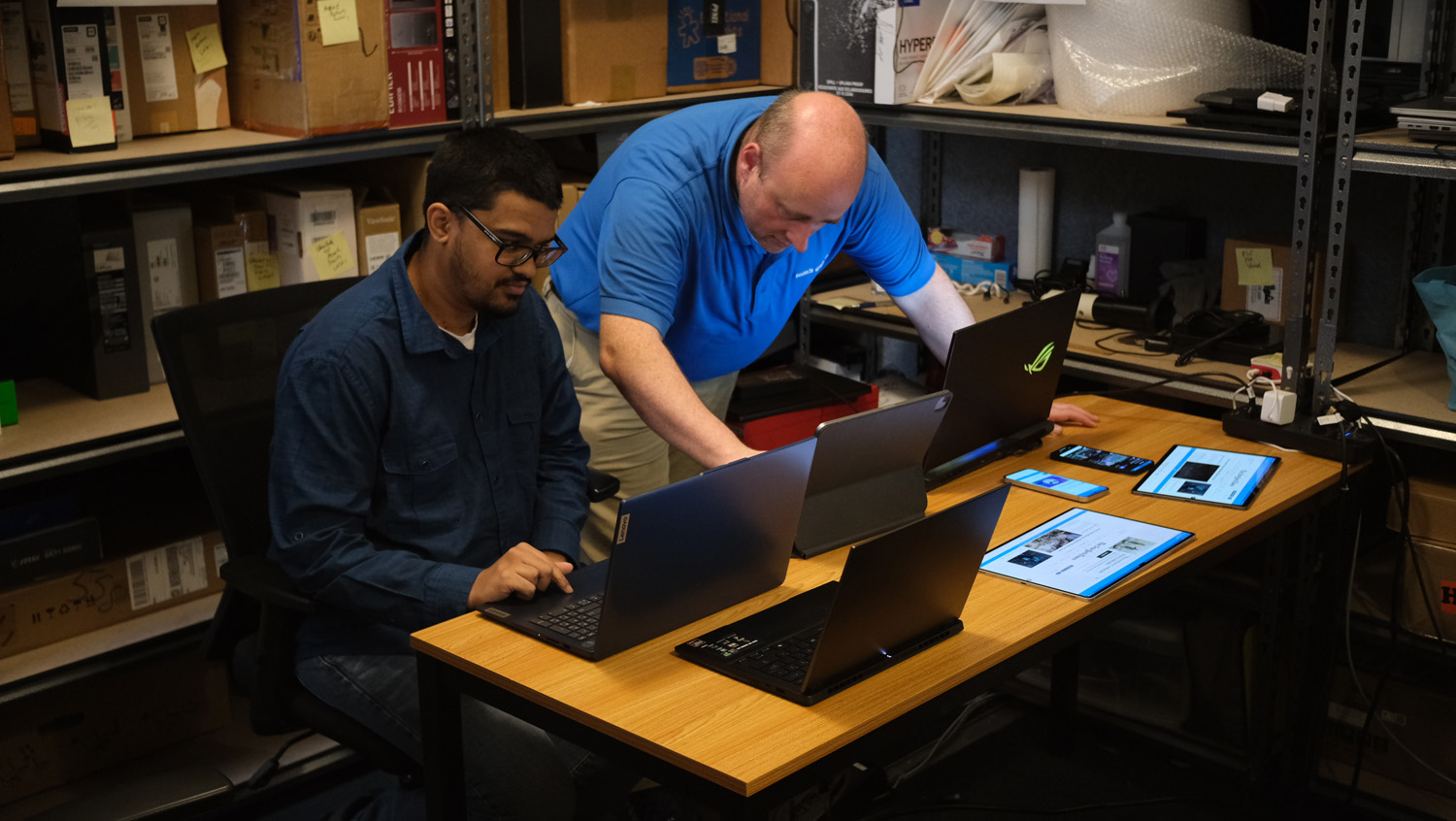
We put each laptop through extensive benchmark testing — both synthetic and real-world — before they end up in the hands of our reviewers. We evaluate every aspect of the laptop, but to find the best laptops for graphic design, we pay extra close attention to performance, graphics, and the display.
Performance testing includes Geekbench 6, which evaluates the laptop’s ability to handle a variety of different tasks and continue running smoothly. For laptops with discrete graphics cards, we use the 3DMark Fire Strike benchmark, and for integrated graphics we use 3DMark Night Raid.
To determine real-world performance, we convert a 4K video to 1080p resolution and duplicate a 25GB file. For gaming performance on integrated graphics, we use Cid Meier's Civilization V: Gathering Storm benchmark at 1080p resolution and Medium graphics.
For discrete graphics, we run benchmarks in Red Dead Redemption 2, Assassin's Creed Mirage, Shadow of the Tomb Raider, Borderlands 3, Far Cry 6 (and more) in full-screen mode with vertical sync disabled at 1080p and the laptop's native resolution.
We use a Klein K10 colorimeter in our display testing to measure overall brightness, as determine the DCI-P3 and AdobeRGB color gamut color accuracy.
For our battery test, we continuously web surfing over WiFi at 150 nits of brightness. For MacBooks and premium Windows 11 laptops, a runtime of over 10 hours is considered a good result, whereas gaming laptops and workstations that can stay powered longer than 5 hours deserve praise.
We also run heat tests by playing a 15-minute full-screen video (or playing a video game) and measuring temperatures in different areas of the laptop.
We complement these tests with extensive hands-on testing from our reviewers, who critique everything from the laptop's materials to the feel of its touchpad.
See this page on How We Test Laptops for more details on our benchmarking procedures.
Why trust Laptop Mag
Laptop Mag reviews over a hundred different laptops every year, from paperweight ultralights to everyday workhorses to lumbering gaming notebooks that scorch the frame rates of even the hottest AAA games. We're not just experts in the laptop field, as we go one step further by meticulously testing smartphones, tablets, headphones, PC accessories, software, and even the latest in gaming.
We are 100% independent and have decades of experience to help you buy with confidence. In fact, Laptop Mag has been testing and reviewing products for three decades, and we continue to deliver trustworthy reviews you can rely on.
Our experienced team of writers and editors scour the available information about the laptop and put it through its paces to determine which is best for you. But before they start, the testing team subjects each system to a rigorous regimen of synthetic and real-world tests to see how a system handles the type of work and games you’re most likely to throw at it.
Our editorial trustworthiness is enforced by one of the world's largest technology publishers, Future Publishing. As a company, we have unrivaled experience across every tech sector — and we're the group's specialist for all things mobile tech.
Sign up to receive The Snapshot, a free special dispatch from Laptop Mag, in your inbox.

Joanna Nelius is a contributing writer to Laptop Mag. She has reported on and reviewed laptops for The Verge, Gizmodo, PC Gamer, and USA Today.


